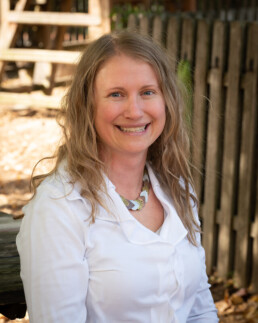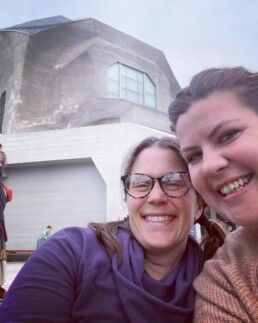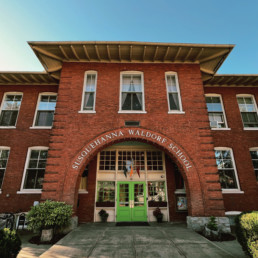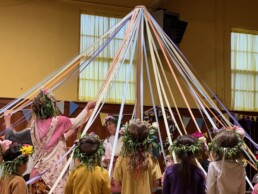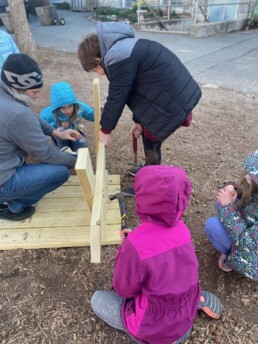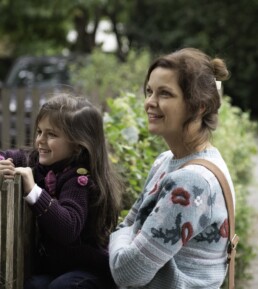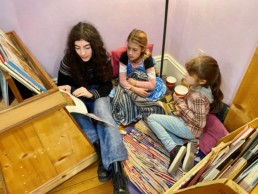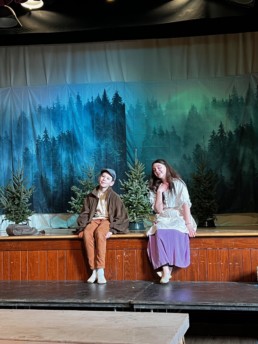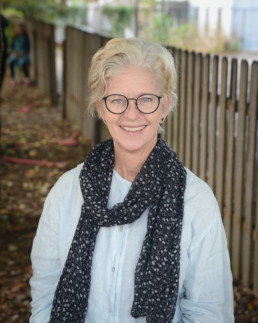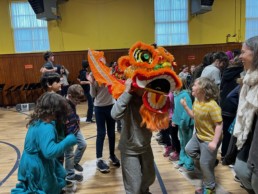SWS Community Highlight: Education Support Teacher Krista Bieniek
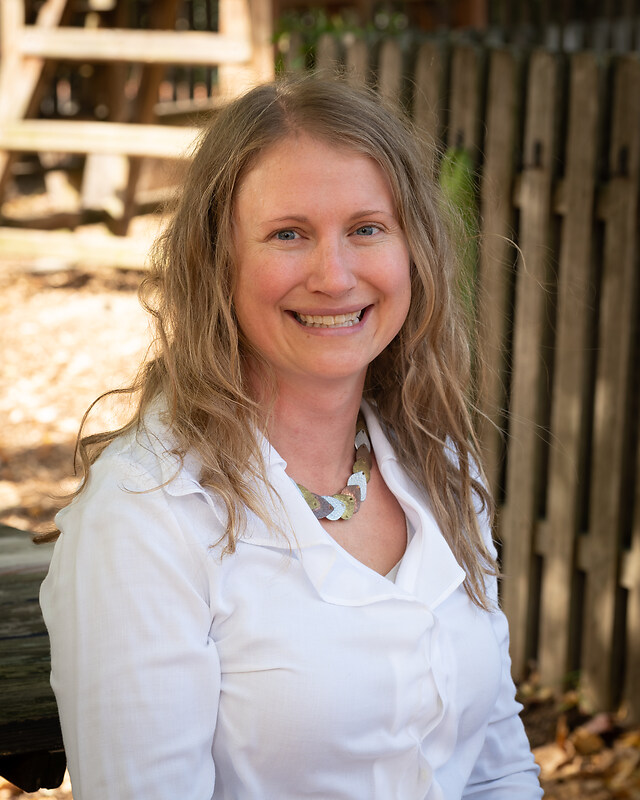

How long have you been a part of the SWS community?
I had to go back and count. 2016 is the year that I apprenticed with Ruth [former Education Support teacher], which was part of my Extra Lesson training. So that makes it 7 or 8 years. I started to learn more about this tradition of support that we have in Waldorf education. It’s quite different from what support might look like in another setting. My background is in child development, so I’ve worked a lot with neurodiversity, different learning styles, different learning needs, and then, to find a methodology of support in Waldorf Education was an exciting moment for me.
Tell us about your work as an Education Support Teacher.
I’ll tell you more about Extra Lesson, which is my favorite part of my work. The Extra Lesson is a tradition that we have in Waldorf schools. It was started by Audrey McAllen, who was a remedial support teacher and student of anthroposophy studying [Rudolf] Steiner. She had remarkable insights about human nature and how that relates to child development. She developed wonderful movement, drawing, and painting exercises to help children find their way into their bodies more fully. In my mainstream education in child development I learned about typical development but not what to do when development isn't typical. I learned about how it is when it’s perfect but it’s never perfect and that is what the extra lesson does. It addresses any underlying developmental movement, sensory, and motor integration challenges.
In practice this looks like lots of movement when I'm working with a student. We’re jumping rope, we’re throwing, we’re catching, we’re rolling, we’re crawling, we’re balancing. All sorts of movement that explores the space around us and our bodies. Walking backward. Which is quite challenging for the small child. Standing on one foot with your eyes closed. Which is also quite challenging for some children but this work opens up more layers of neurological development. All this while practicing within the Waldorf traditions which always prompts teachers to hold this wonderfully open space to ask “Who, truly, is this child? ”And “What is it that they have to show me?” That’s always in the backdrop of the Extra Lesson: these movements, drawings and painting exercises, and asking myself where the children are on their path in relation to these developmental milestones. And how can little nudges of support help them find their way?
Our goal is to support children to grow into fully free human beings. And what that means from my perspective as a support teacher is that one can take in sensory information, including academics, and not be unduly hindered. There’s still so much space for diversity and all of the individuality in this. But, as much as we can, we want to have underlying foundational development pieces in place. That is the goal. The first-grade assessment is a really good example of this. It's a huge moment in development when we say that we’re not going to introduce any higher-level learning until we know that the child can meet certain developmental milestones. One is left-right brain integration. We know that students do better academically if that stage of development is fully complete.
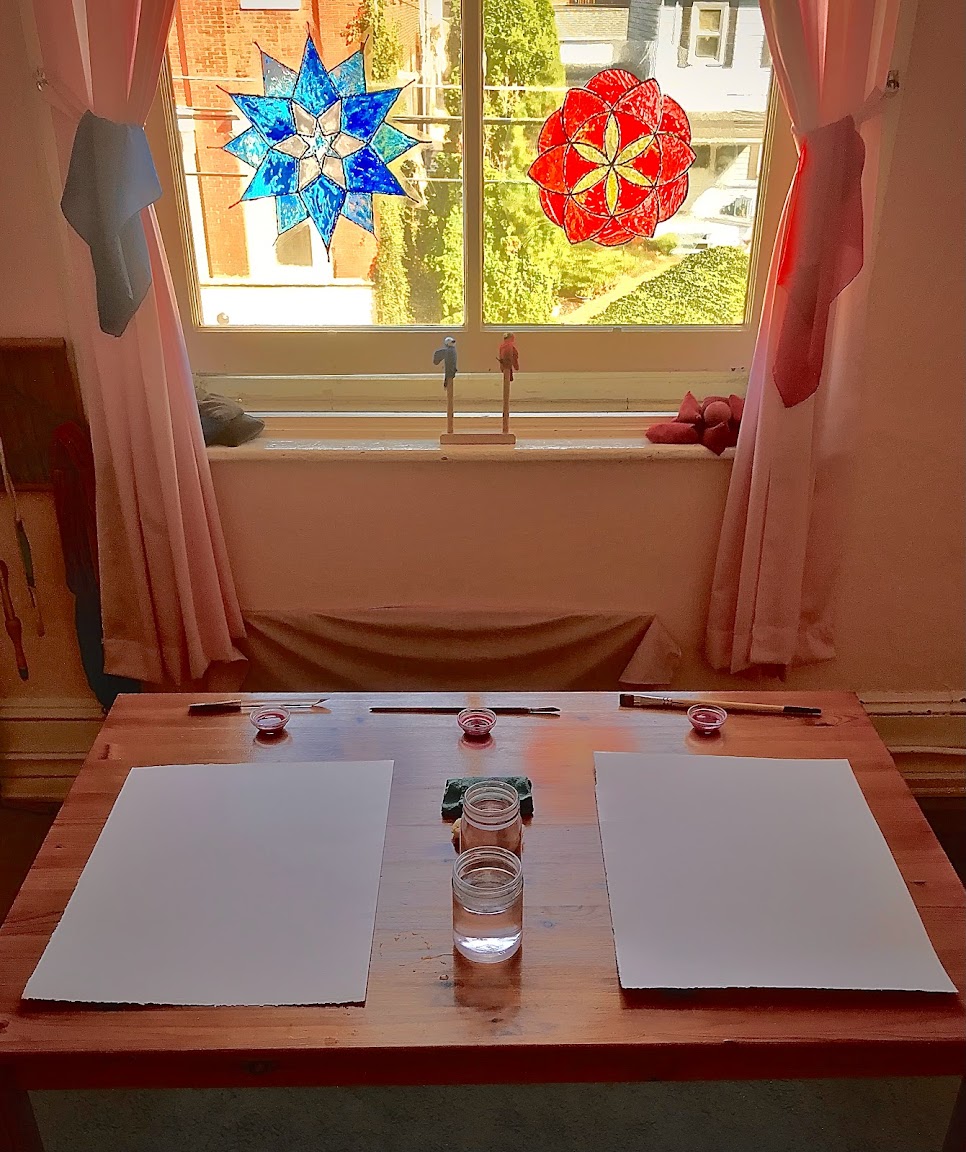

What led you to Waldorf Education?
Learning about the first-grade readiness assessment was my first moment of “Wow, what is happening here? What is it that they’re doing?” Because of, as I shared already, all of the work I had done in child development. This is the answer to “What do we then do? How do we help support whole human beings?"
Also learning about Child Study. That is something really unique to what we do [in Waldorf education]. Taking a moment to have the whole faculty lovingly, as unbiased as possible, observe another human being. I mean that blows my mind. Who else does that? It’s not “What are they doing wrong?” or “Why are they not able to pay attention?” We ask ourselves: “Who are these children before us?” “What are the unique gifts they are bringing into the world?” “What do we, as teachers, need to learn from them?” That is astounding.
There's Care Group as well. Which is another unique part of many Waldorf Schools. Care Group at SWS is a group of teachers who voluntarily meet each week as a committee to holistically hold the child from this open perspective that I’ve been describing. Taking time to observe and to offer recommendations to teachers and offer student support where needed and recommendations for outside support where needed. The amount of time and energy that is spent on each child, I have not found that level of care and dedication anywhere else.
What sets SWS and Waldorf education apart?
I think what first comes to mind is breathing. That is the core of my work. From a very practical sense, to ask the question, “Is this child able to breathe in, to take things in? And are they able to relax and to breathe out?” And so many people, children, and adults, cannot. They are in this sympathetic, flight, or fight mode of stress. We first make sure that you are well and can take in information, to take in learning. That is one thing that Waldorf education does beautifully. It’s at the heart of everything. To hold that as the first question. “Are you happy? Are you whole? Are you well? Are you breathing?” To see then, after receiving an education here, how alums can go out into the world and fully meet it with all its present challenges. They have so many resources and faculties at their disposal. They are what inspire my work too.
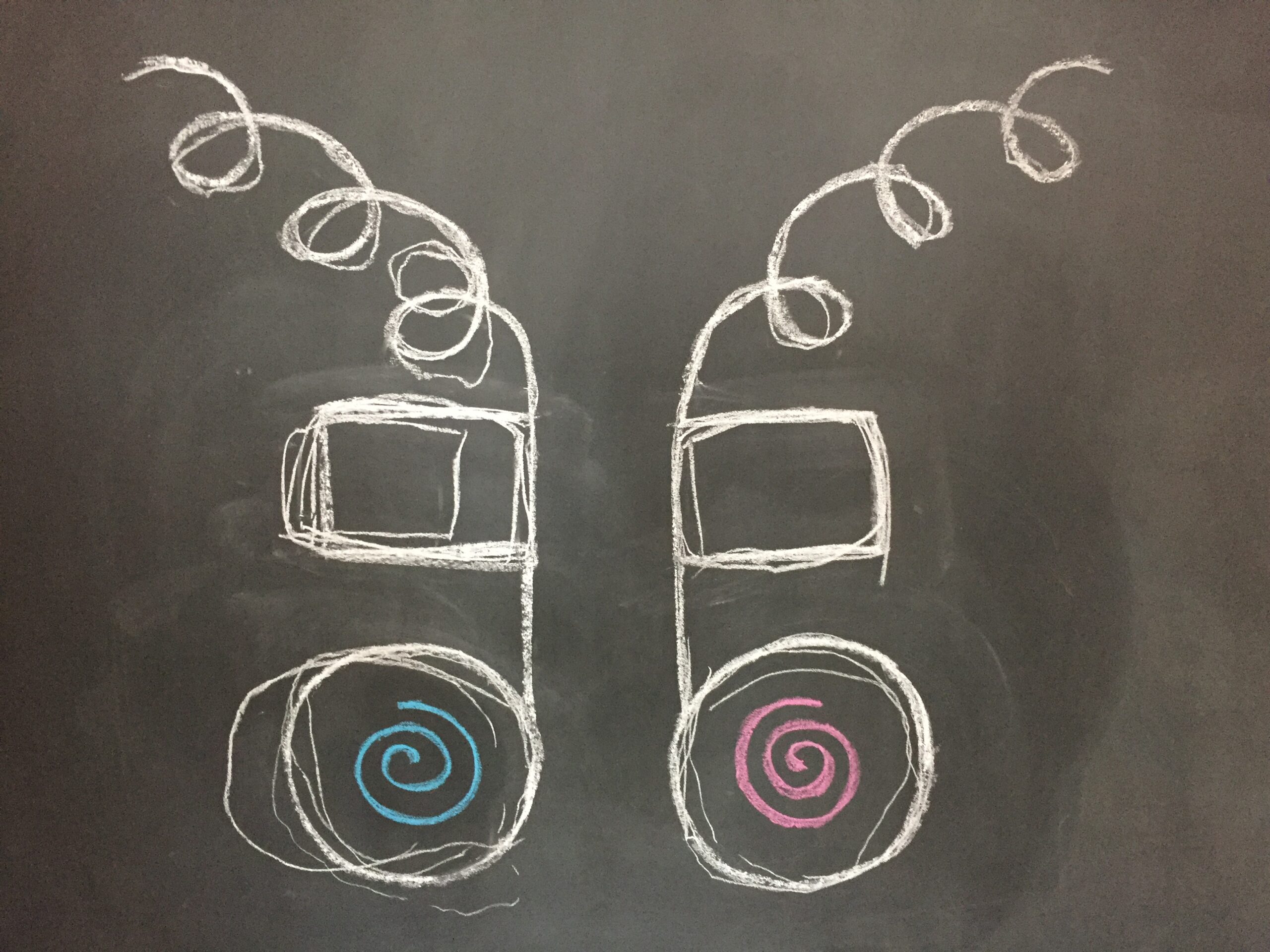

How has working in Waldorf education impacted you as a person?
I’m so lucky to be here. I have found the way that we work at SWS to be tremendously impactful. There is so much space given for self-development. The whole “life-long learner” motto is also fully held by teachers and we are supported on our own paths in so many ways. We study together, there's professional development. Even how we hold our relationships with each other, conflict resolution, all of these things. I have found that tremendously impactful to work in a community where there is so much striving and room to always learn and grow as an individual.
My study and practice of Extra Lesson has also made a deep impression on me personally. I had very mild dyslexia as a child and young adult. I don’t want to say it’s completely gone because I want to be really fair that obviously, everyone is different and will be impacted in different ways, but Extra Lesson has helped me to a tremendous degree. I never struggled with behavior or academics in school but I never had a full comfortability in my body. I never realized that I was working extra hard with spatial orientation, which translates into one's processing of language and numbers. I had always a brief moment of pause, hesitation and ultimately lack of confidence and ease until I was able to learn and work more fully with developmental movement processes. This experience helps inform my work a great deal because it helps me understand, to a degree, the experiences and challenges many children are having at present.
What's your favorite thing to do when you're not at SWS?
I’m biking if I’m not here. If I’m not doing that, I’m probably digging in my garden. Planting all sorts of things. If I’m not doing that, I’m probably reading, doing yoga, studying, and relaxing. All those good things. Camping, hiking. There are all sorts of fun things that I’m so looking forward to doing this summer.
What’s your favorite thing about the SWS community?
The festivals. I find the rhythmic nature of them supportive. Just the same thing every year. Knowing that it’s coming. Predictably is so supportive for anxious children and good for adults too. At the same time it’s also the ability to create anew in community together each year. It’s always different. It’s magic for me when all sorts of people get together each year to decide, “What are we going to bake together? What are we going to craft together?”
The World Teachers' Conference in Dornach, Switzerland
Written by Rising First Grade Teacher, Kerry Clements.
"The true teachers and educators are not those who have learned pedagogy as the science of dealing with children, but those in whom pedagogy has awakened through understanding the human being."
-Rudolf Steiner
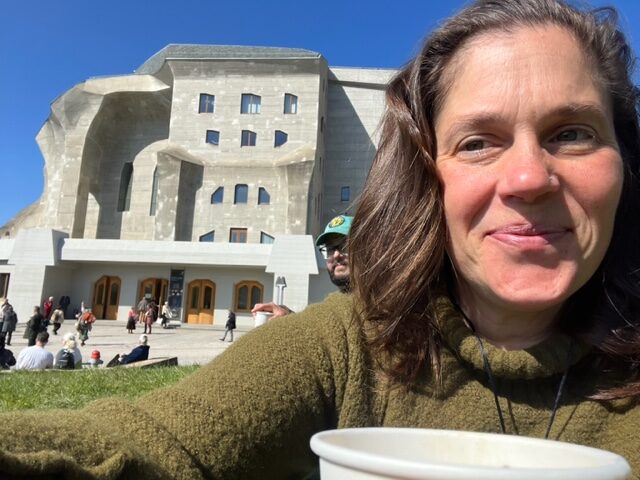

On April 18th I boarded a plane to Dornach, Switzerland for the World Teachers' Conference at the Goetheanum. This majestic building was designed by Rudolf Steiner, inspired by the form of the human being and carefully engineered to compliment the beauty of the land on which it sits. It is a school of spiritual science, an international center of music, theater, conferences, and the seat of the General Anthroposophical Society. Built mostly of concrete, the structure is an engineering marvel.


The World Teachers' Conference hosted over 1,000 teachers from 61 countries with over 40 different languages represented. It is hard to describe the awesomeness of this experience as I entered the main hall of the Goetheanum. Here I was, in the midst of a sea of teachers, including my dear friend and colleague, Mandela Davis. One thousand souls who had come together, from all over the world for the same purpose, to collaborate and grow in our knowledge and understanding of the Waldorf Education movement and how it meets the children of our time and future generations.


The 2023 conference was titled “Affirming – Nurturing – Trusting, an Education for Today and Tomorrow”. Throughout the 5 day conference, I had the opportunity to hear from some of the most creative and intuitive leaders in the Waldorf movement. Discussions ranged from early childhood development and incarnation, the impacts of digitization on the growing child, sensory development and integration, emergency pedagogy, and the urgent initiatives of Diversity, Equity, and Inclusion. Each moment was filled with insightful and inspiring discussions, artistic activities, and personal and spiritual growth opportunities.
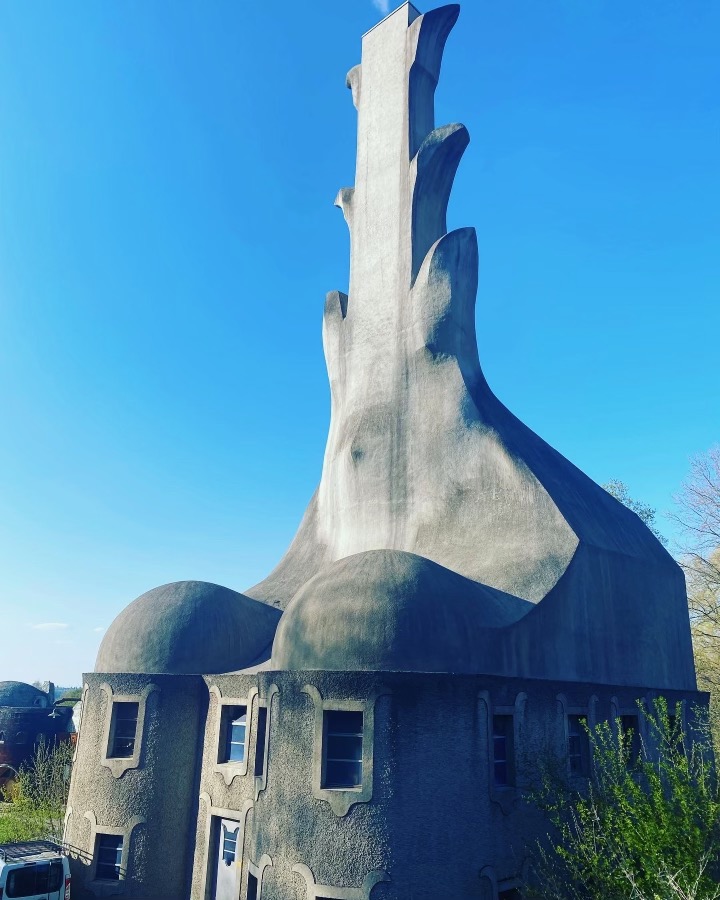

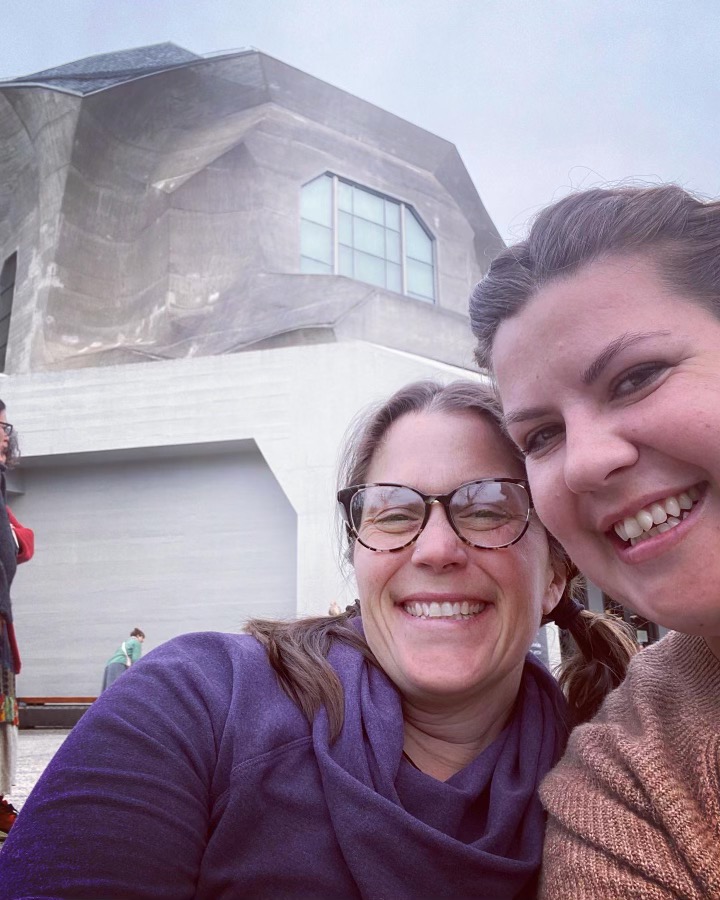

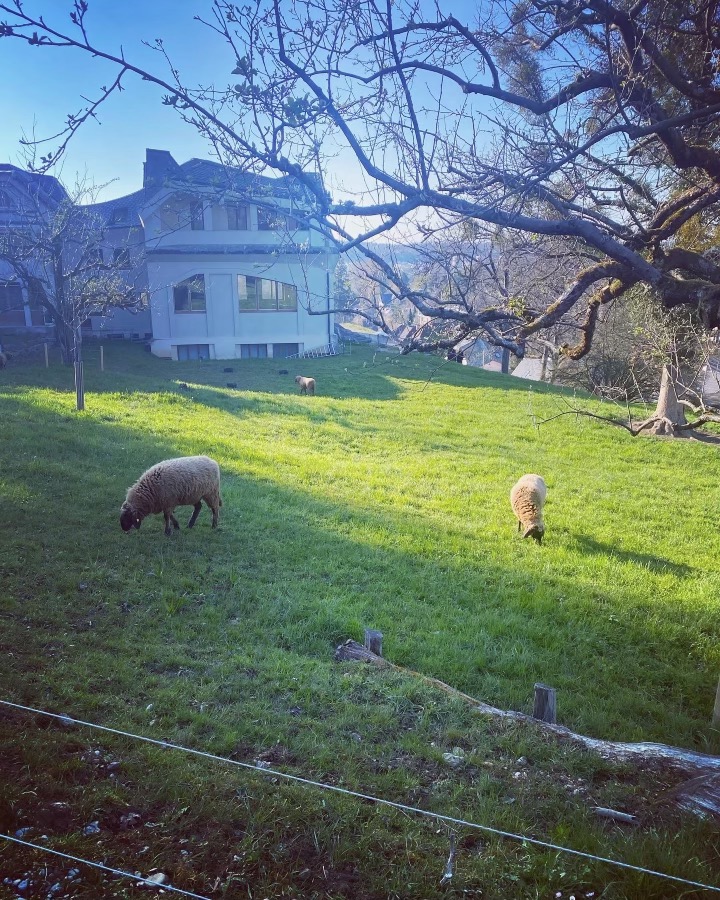

I am so very grateful to have had the opportunity to represent the Susquehanna Waldorf School at this international assembly of Waldorf teachers. I made so many connections with many different people, from the United States and all over the world, that I am sure will continue to ripple into our school for years to come. Thank you to everyone who supported me in this endeavor and to Mandela for sharing this adventure with me.
2022-23 Annual Report
Written by SWS Board of Trustees President, Dave Knapp.
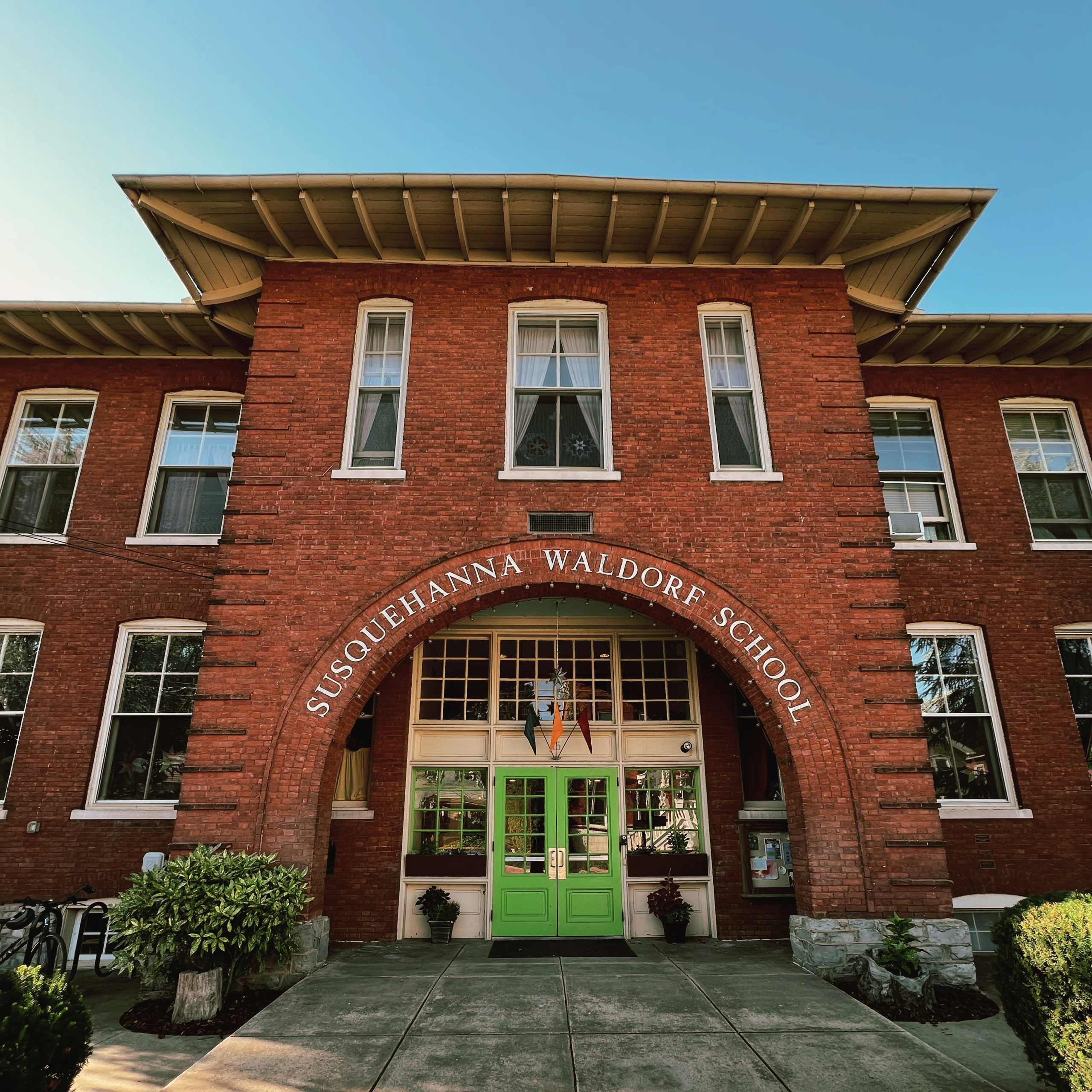

This has certainly been an exciting year! 2022 began with just four Board members (all from the faculty and staff) and today we stand at eleven members. I have worked with many boards and this is the most diversely talented and ambitious group I have had the privilege to work with.
The Board of Trustees, with the assistance of our entire community, has created a three-year Strategic Plan. This plan is our road map for success. Accompanying this plan is a one-year focus. Both plans are on our website for your perusal.
Our focus this past year has been on recovering from the enrollment losses during the pandemic (we lost 56 students in that first year). Much discussion has gone into our organizational structure and governance model and their associated staffing requirements. Our primary focus is on ENROLLMENT. We have set an enrollment target for next year that will be the next step on the path to financial abundance. As we welcome this new abundance, we expect to add a staff member in Development as well as Pedagogical support.
Our Faculty remains exceptional and, as always, we look for ways to support them spiritually and financially. We were able to provide 401K benefits to our faculty and staff for the first time this year, which is truly a cause for celebration.
Our Parent Guild has re-organized following our pandemic separation years. This is another cause for celebration. This is a remarkable group of people who have revitalized many of our fundraisers. We are actively looking at a Parent Guild model that is less work and more play. We will provide more opportunities for this group to celebrate in the coming year.
Much has been done and much remains to be done. We feel optimistic about our future and look forward to continuing to serve this beautiful community.
With sincere thanks from the entire Board of Trustees,
Dave Knapp
Click here to view the SWS 2022-23 Annual Report.
Flower Crowns and Maypole Dances: May Day 2023
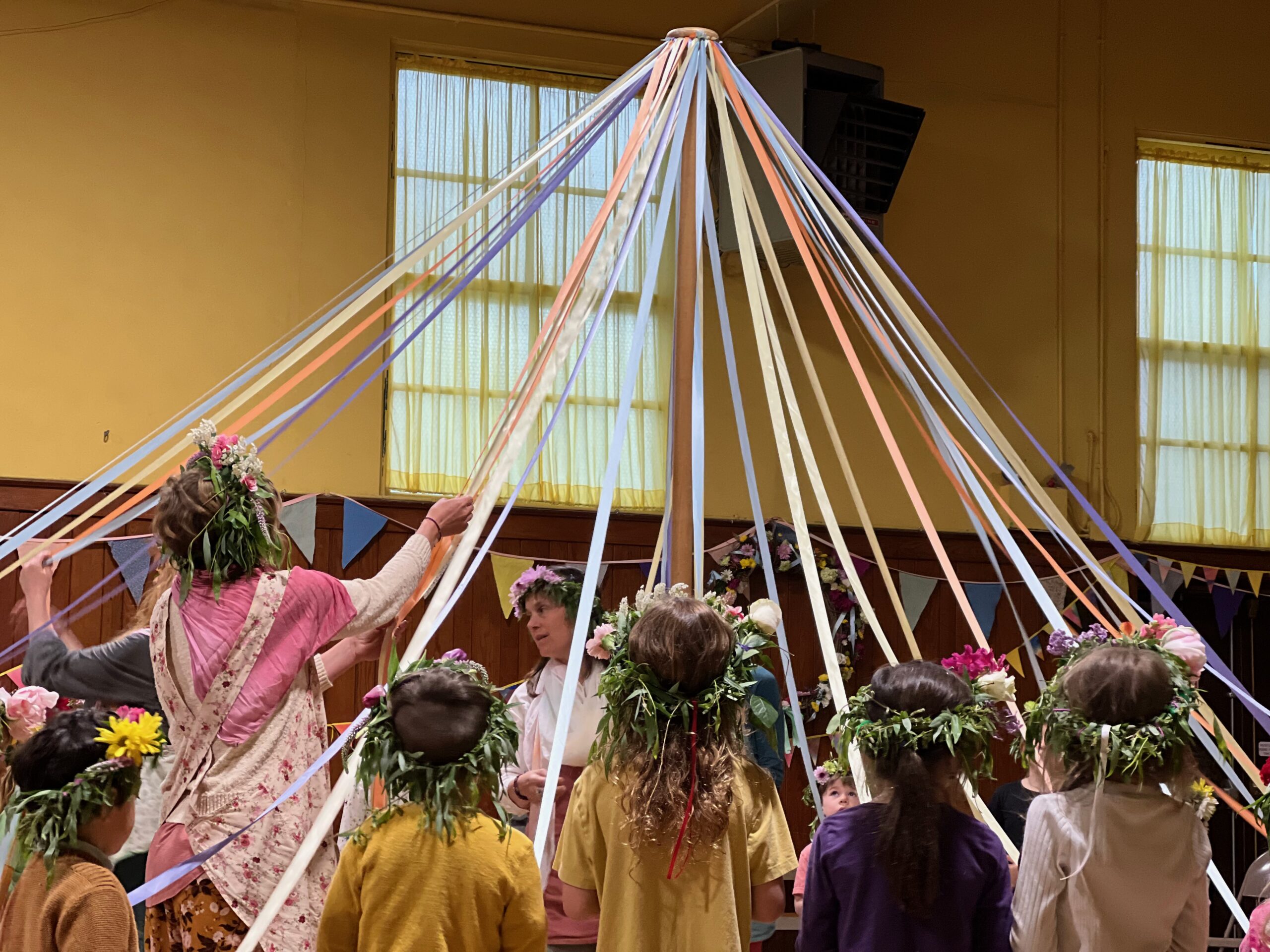

Friday, April 28th marked the celebration of our annual May Day Festival! The morning began with SWS students excitedly entering our school with flowers in their arms. "Happy May Day!" was heard throughout the hallways. May Day is one of the most highly anticipated festivals of the year and one could feel the joy permeating the air.
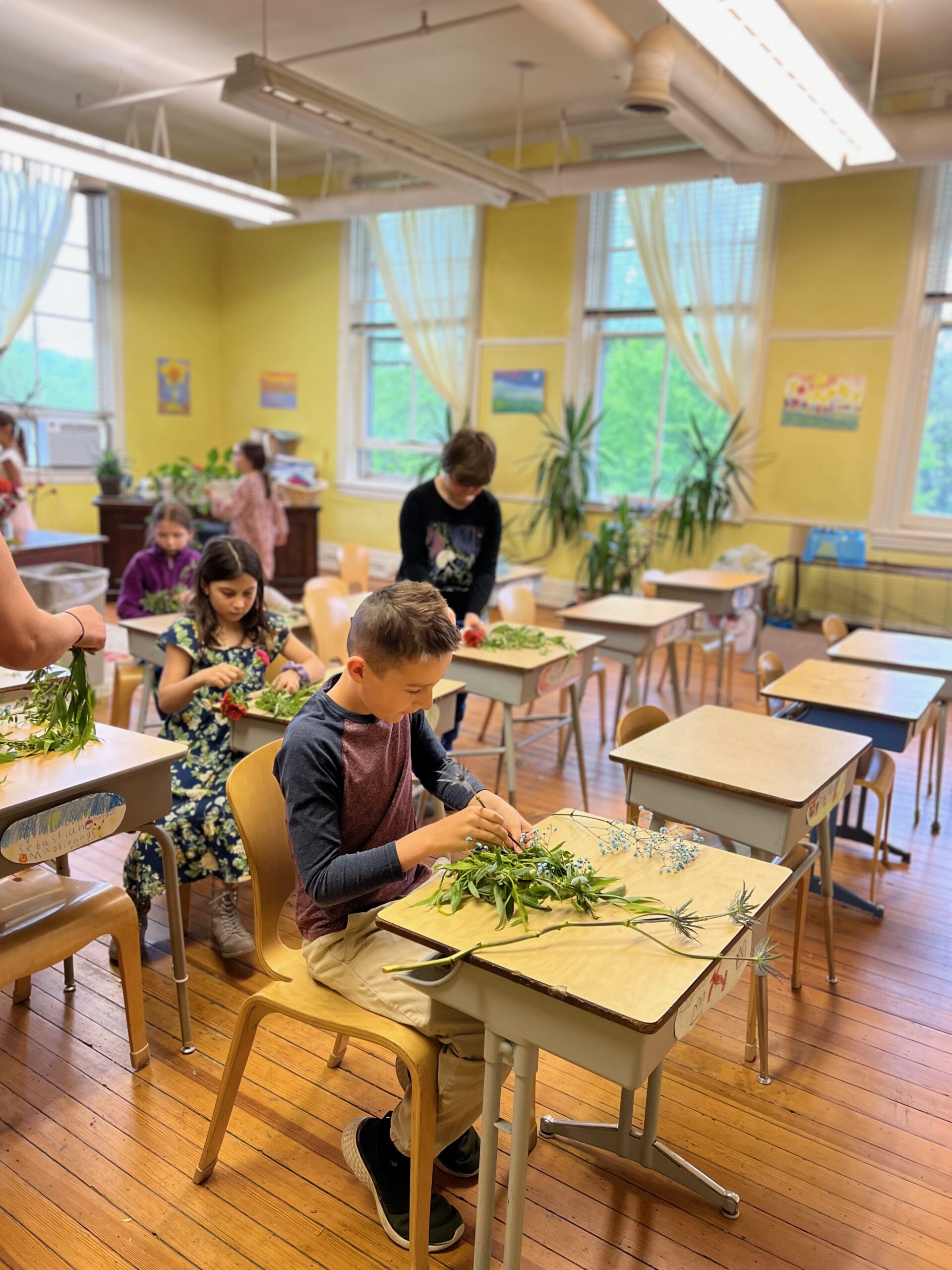

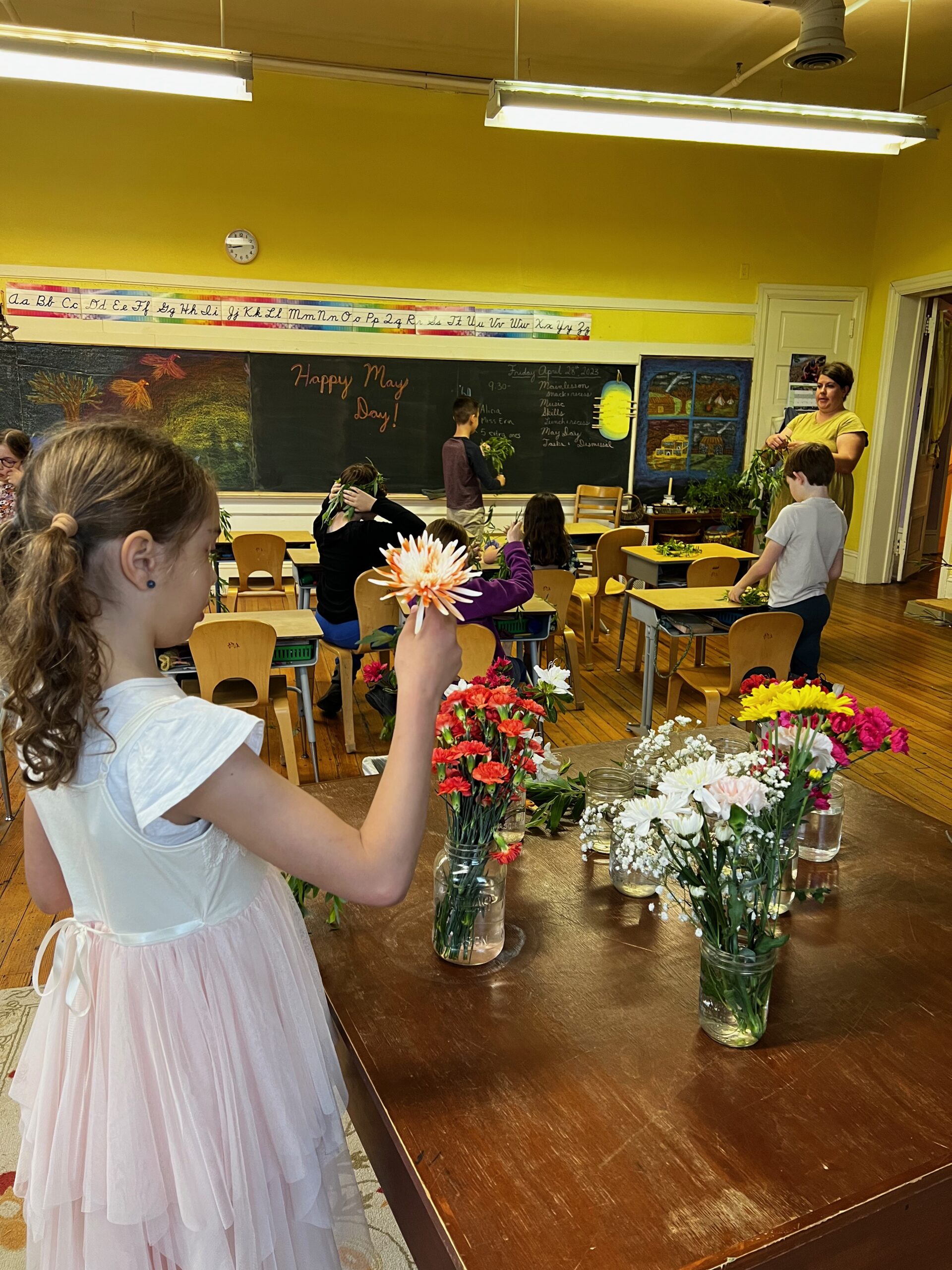

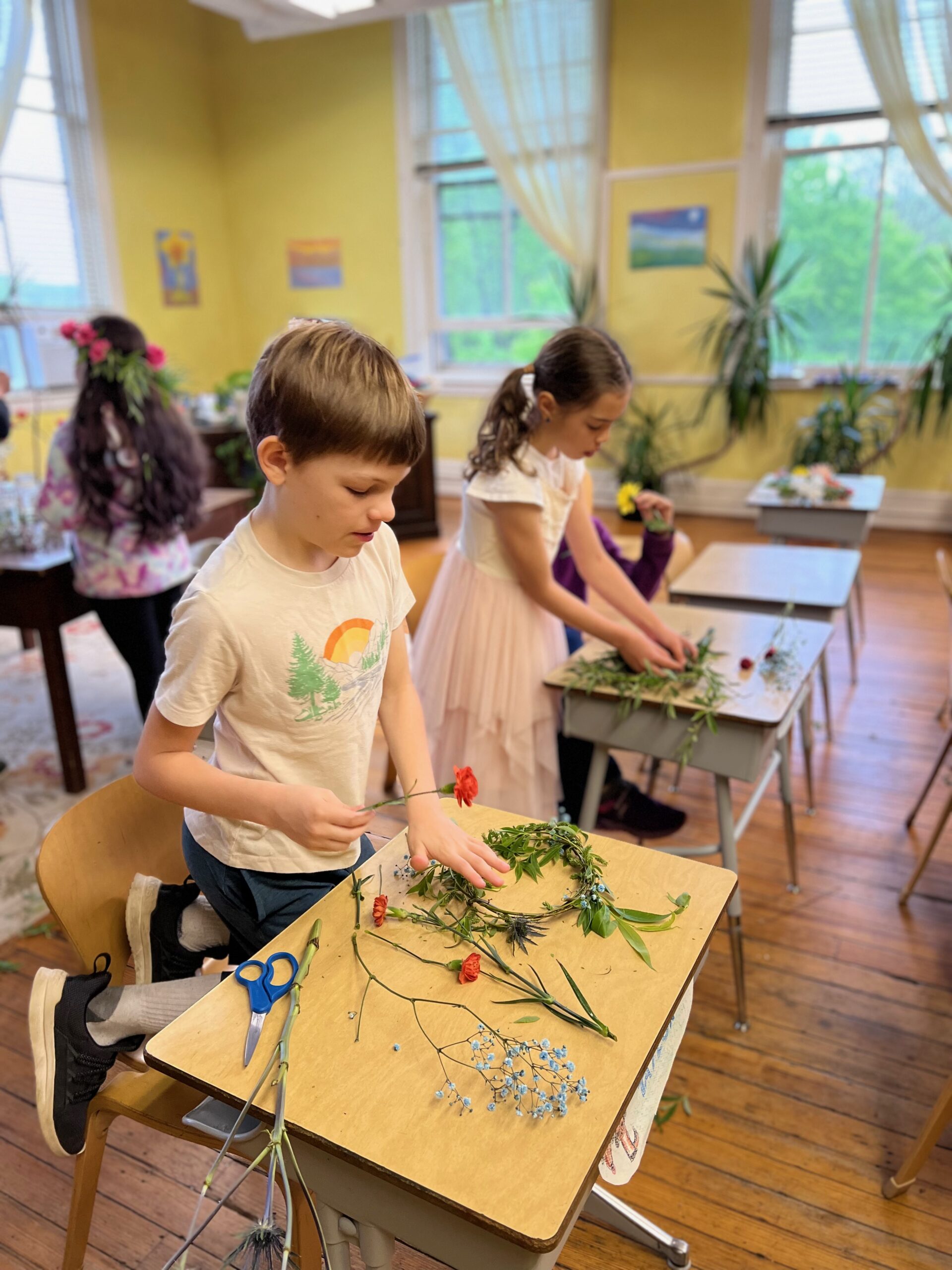

May Day is an ancient festival that lands about halfway between the Spring Equinox and Summer Solstice. It's one of the many festivals we celebrate in Waldorf education that honors the rhythms and cycles of the natural world. Students spend weeks learning May Day songs and dances with SWS Music teacher, Nina Radanovic. This year, our grades students began their day by carefully making their Flower Crowns while parents decorated the school.
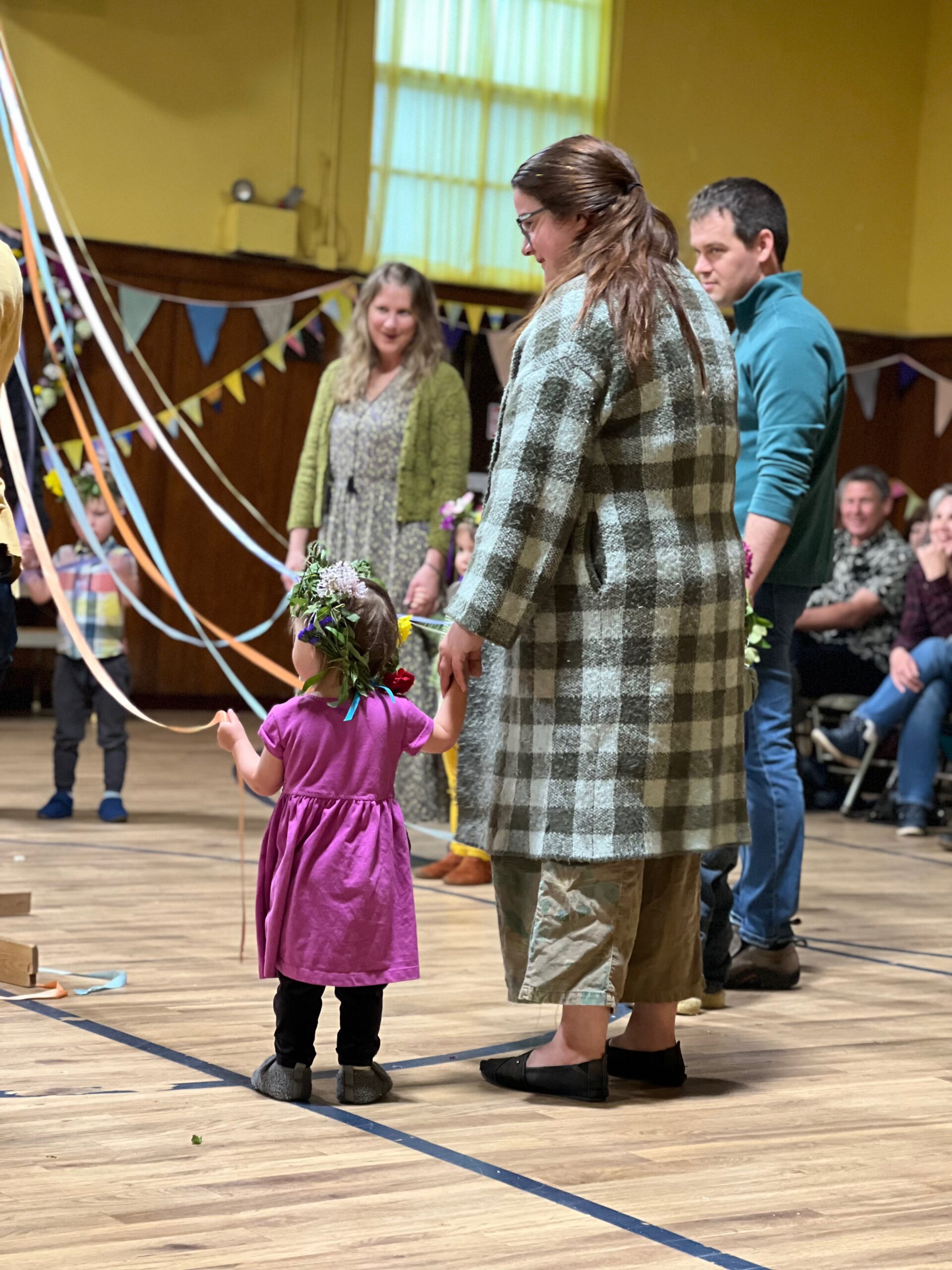

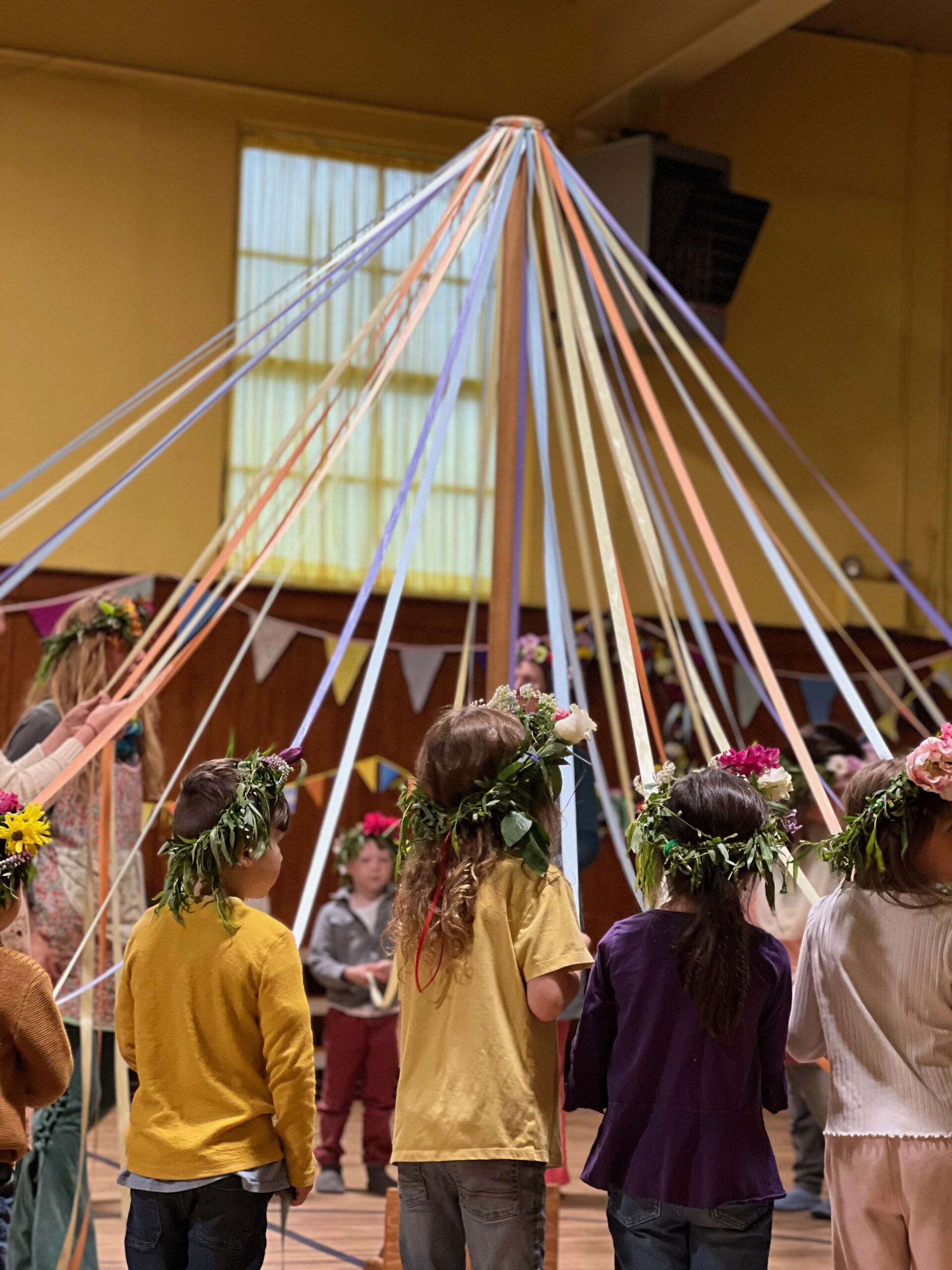

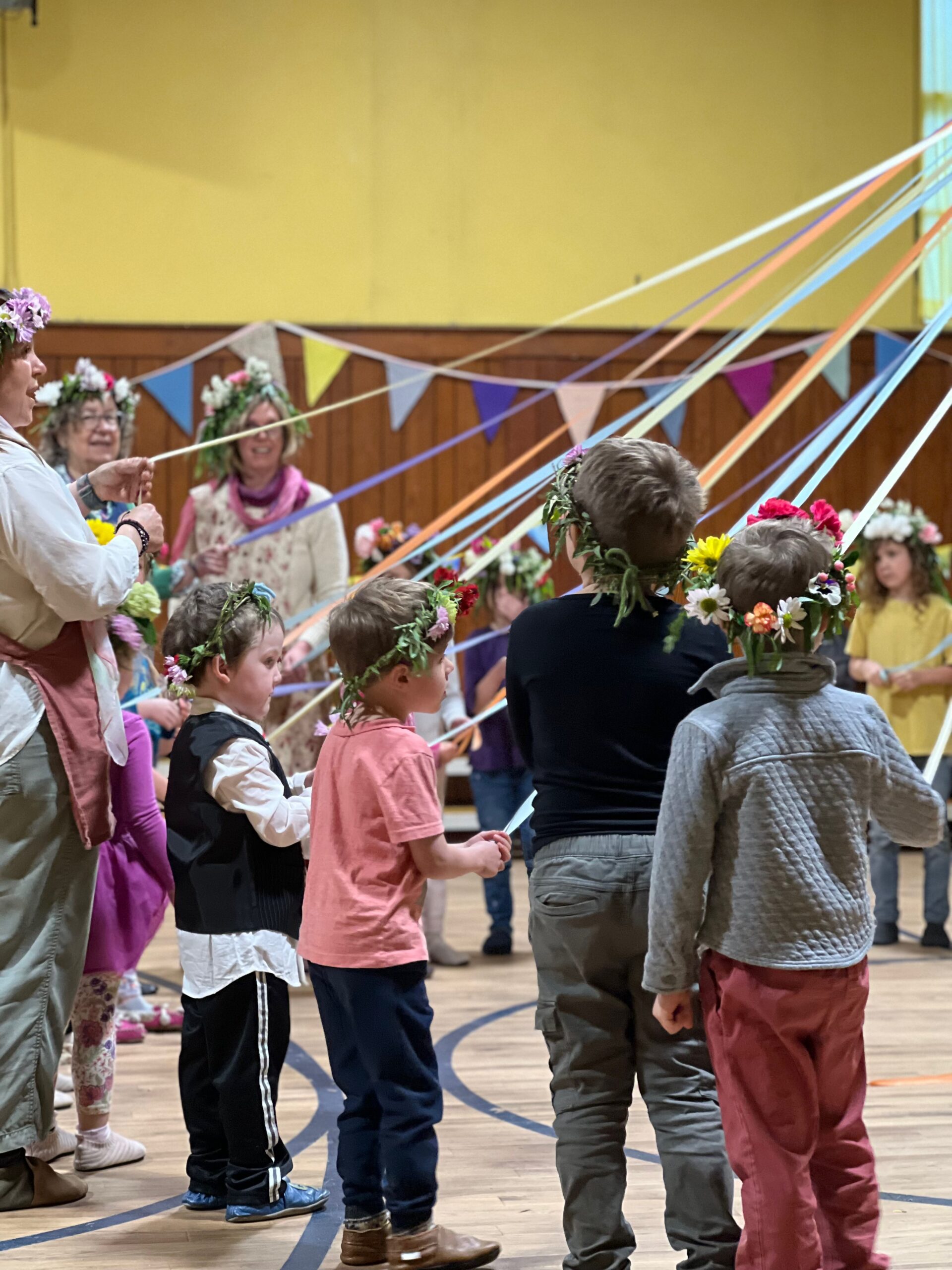

It is always our hope to celebrate May Day outside on our playground but, unfortunately, the weather had other plans this year. May Day celebrations began with our early childhood students. Stepping Stone nursery students entered the gym singing songs of spring. They gathered around the Maypole and, with a parent by their side, danced and sang around the Maypole. Kindergarteners were next and, led by their teachers, did an amazing job!
"Spring is coming, spring is coming, birdies build your nest
Weave together straw and feather, doing each your best.
Spring is coming, spring is coming, flowers are coming too,
Pansies, lilies, daffodillies, now are coming through."
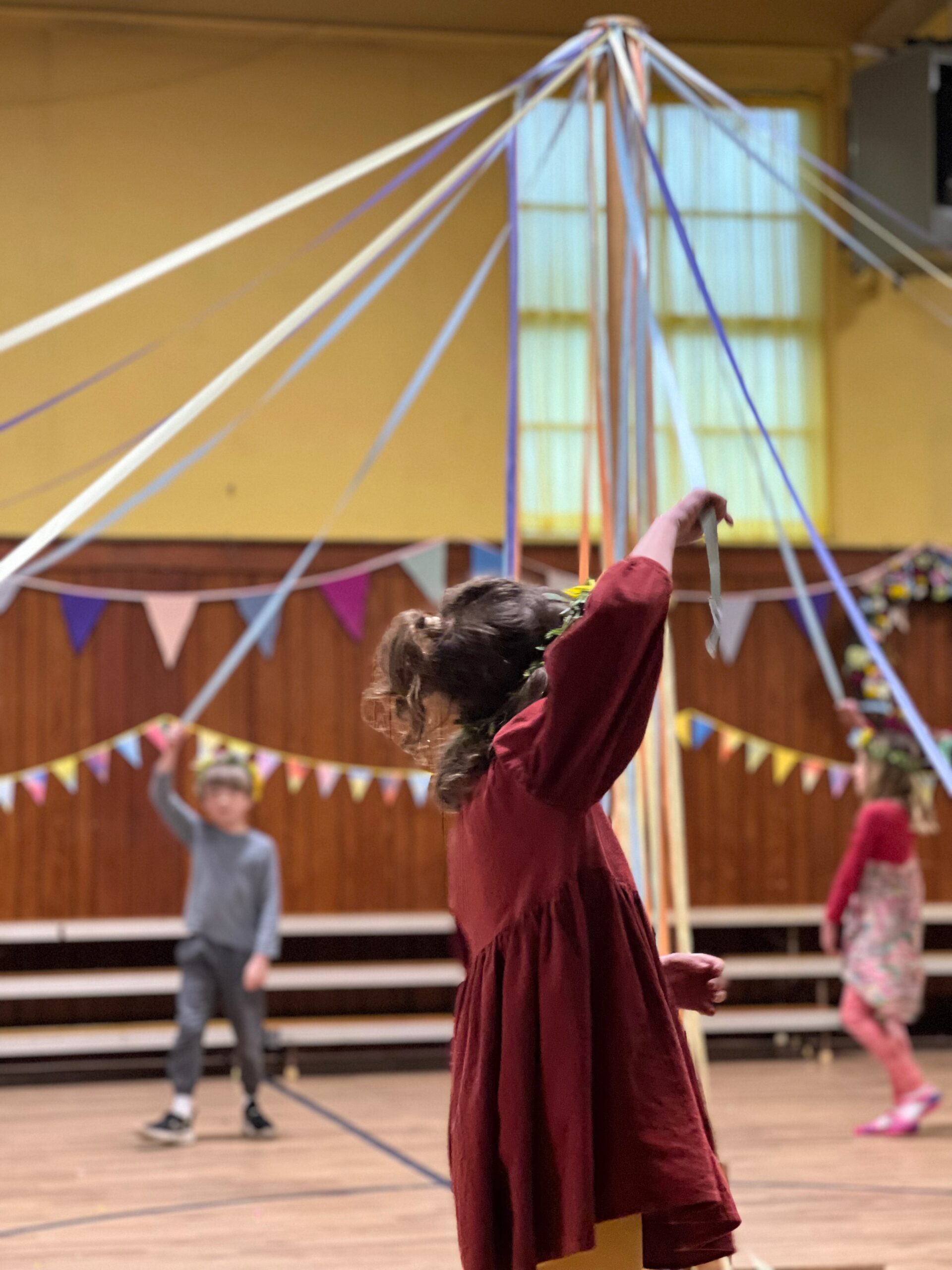

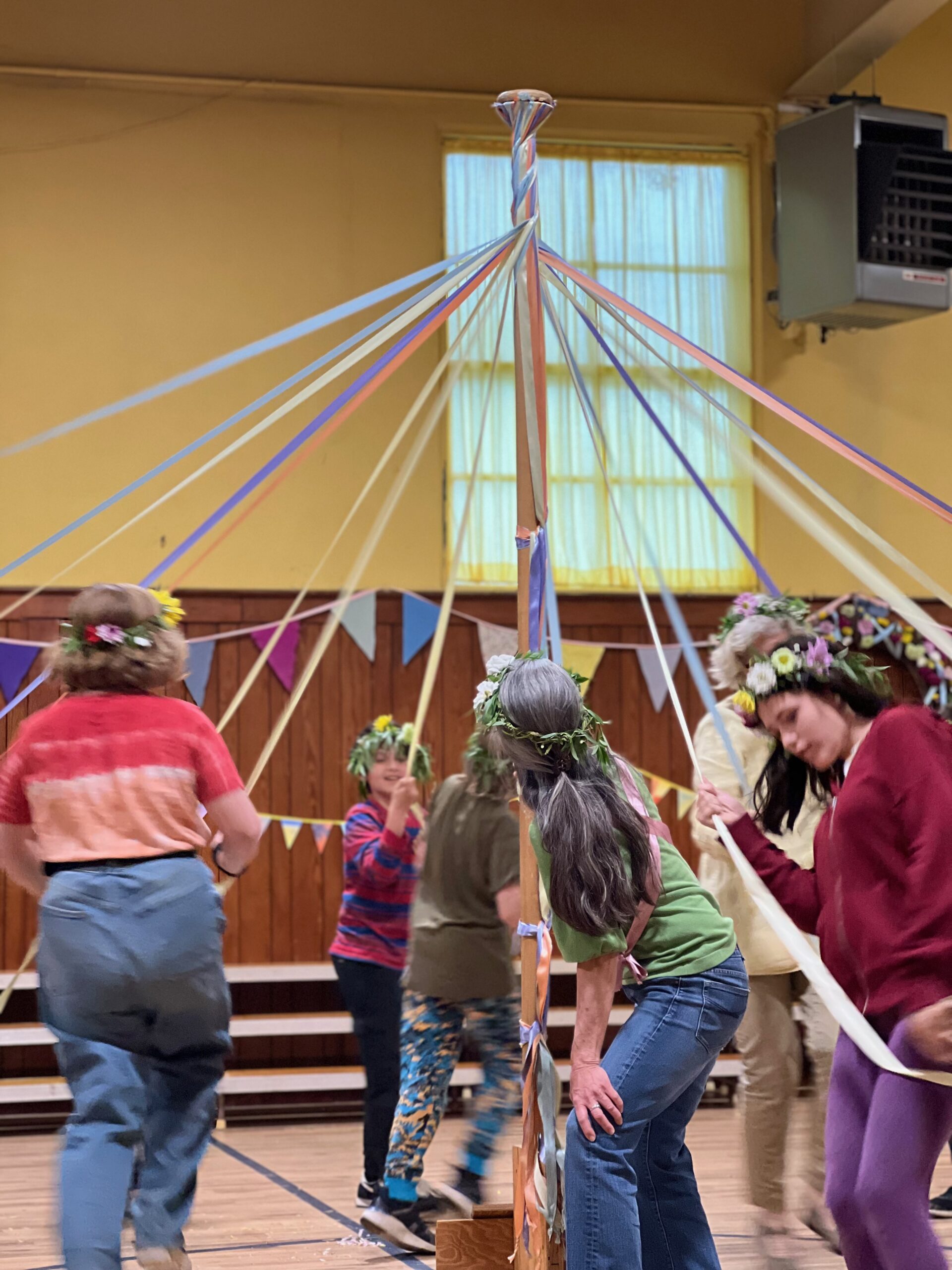

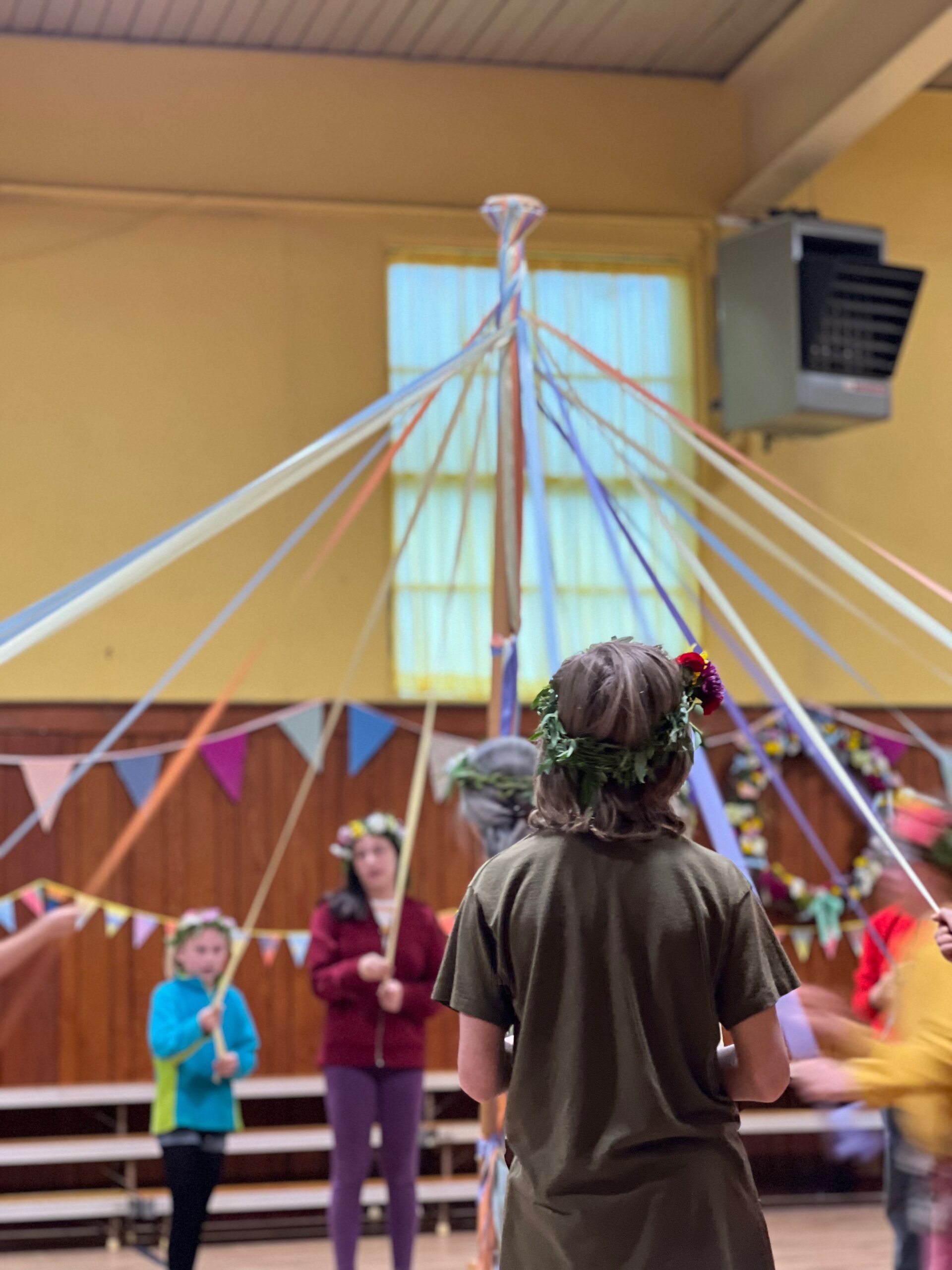

Later in the day, the 7th-grade orchestra, led by SWS Orchestra teacher Michael Cameron, welcomed all as the procession of students led by 8th-graders entered the gym. The festivities began with SWS 5th and 6th-graders performing the North Skeleton Sword Dance and SWS 8th graders performing the Stick and Bucket Dance. It was time to dance around the Maypole! Students gathered around the Maypole proudly wearing their flower crowns, chose a ribbon, and danced and sang in celebration. The gym was filled with laughter, joy, and a felt sense of community. Happy May Day from your friends at Susquehanna Waldorf School!
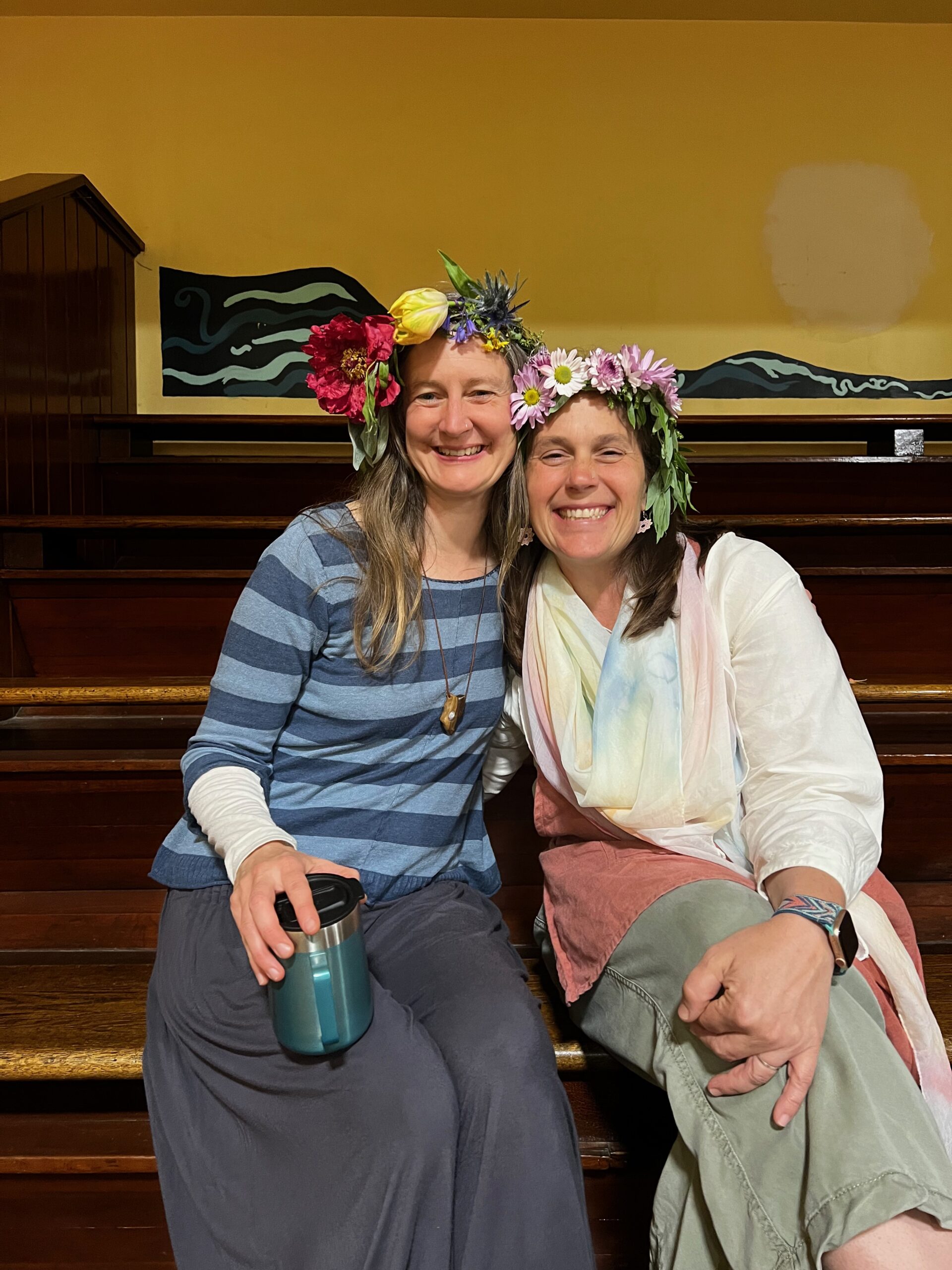

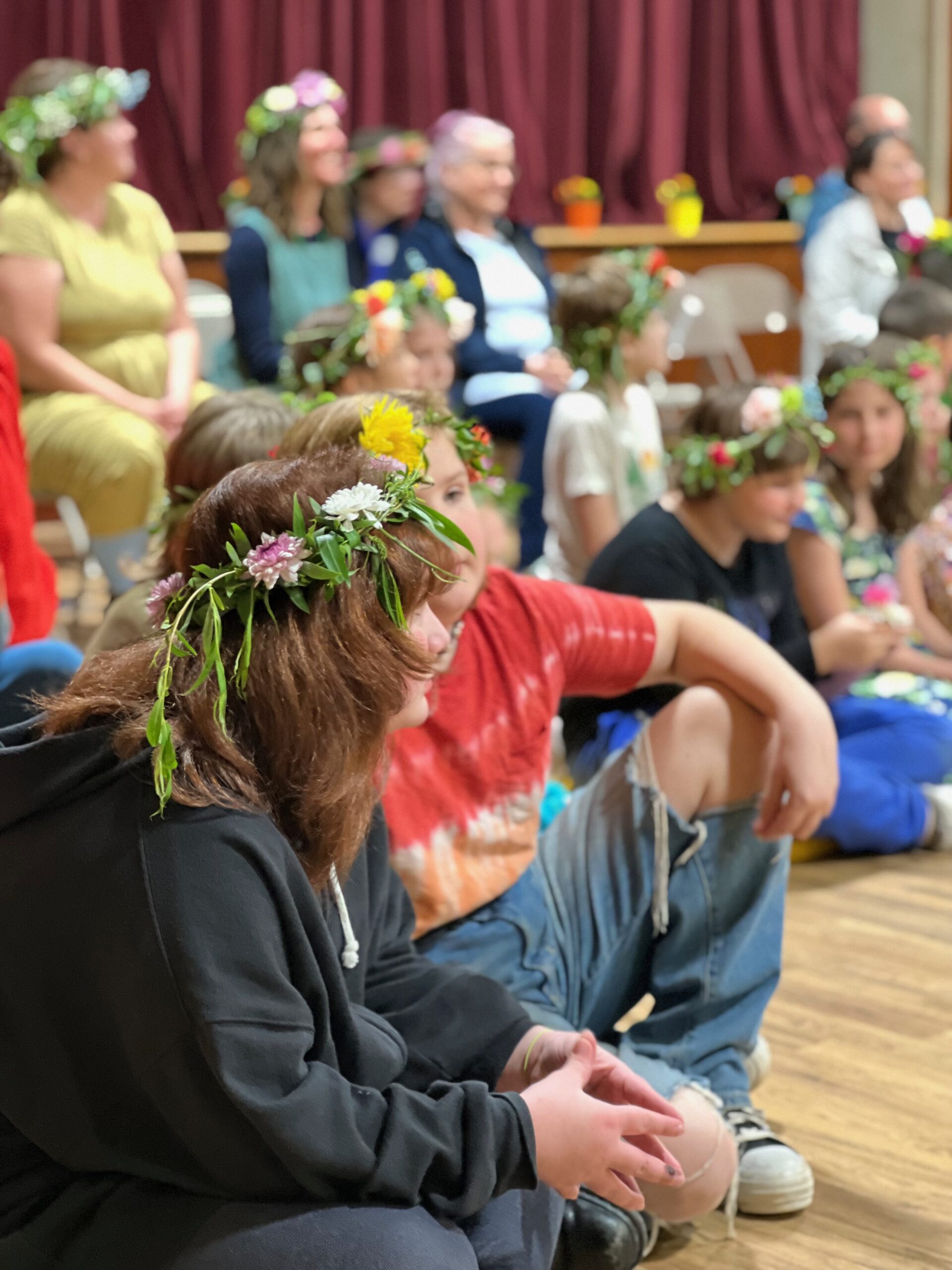

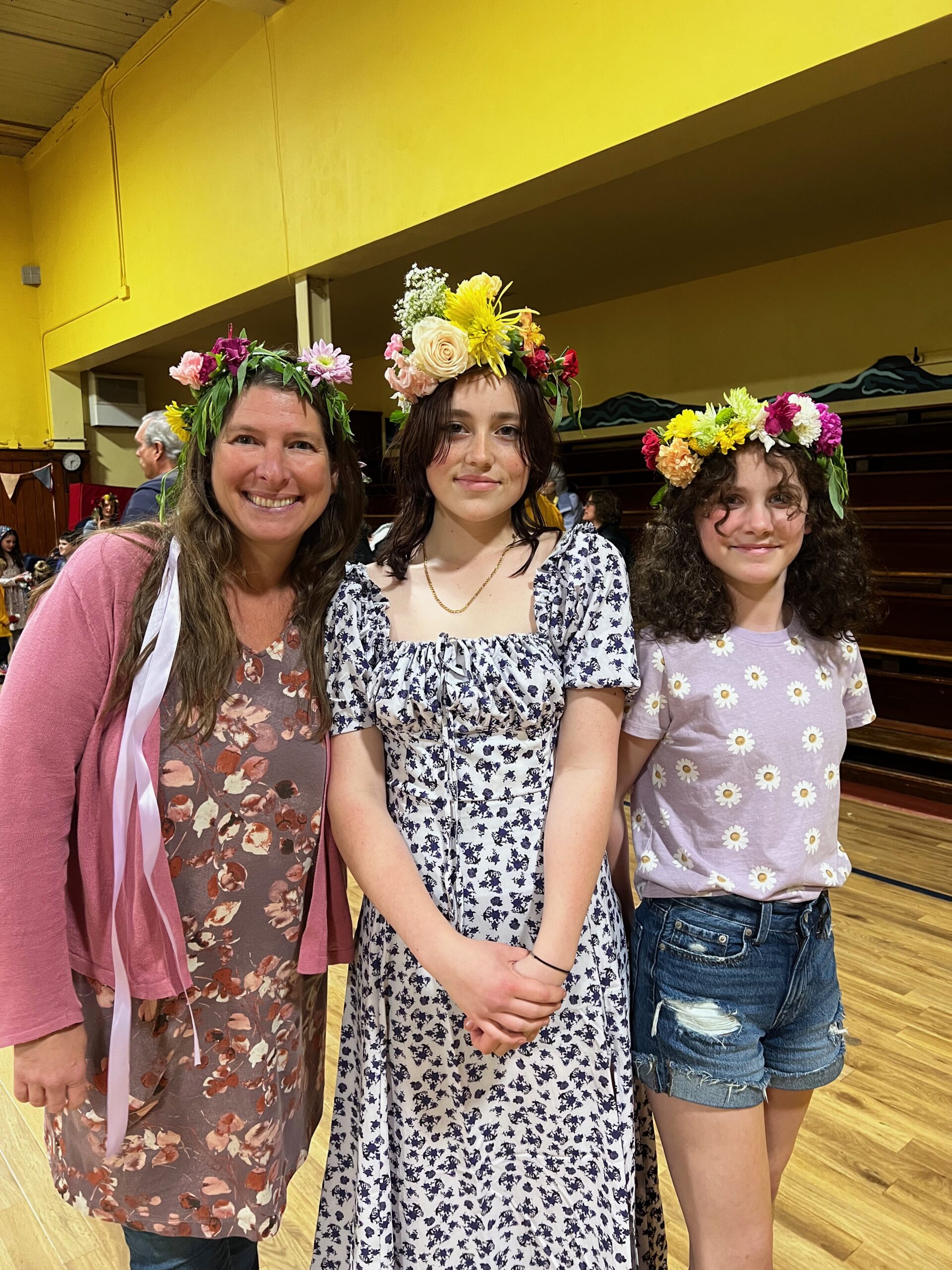

Third Grade Building Project
Written by 3rd-grade teacher, Mandela Davis.


I am so proud of my students! Third grade is an important year in child development, parental relationships, and students' understanding of their whole being. As a class 3 teacher it is my job to help parents see the changes in their 9-year-old and to help teach the love of change they are experiencing as a family.
“The change in the children’s self-awareness grows stronger at the age of nine, and you find that they understand much better what you say about the difference between the human being and the world. Before they reach the age of nine, children merge far more thoroughly with the environment than is the case later, when they begin to distinguish themselves from their surroundings. Then you will find that you can begin to talk a little about matters of the soul and that they will not listen with such a lack of understanding as they would have listened earlier. In short, the children’s self-awareness grows deeper and stronger when they reach this age.” - Rudolf Steiner, Founder of Waldorf Education
In Waldorf 3rd-grade classrooms around the world teachers, parents, and caregivers have the opportunity to give the security the children need. Around age 9, give or take, a child sees the world from a whole new perspective. Their beloved childhood of the imagination is changing. The doll in the playhouse is no longer speaking or talking to the other doll. I remember the exact moment around 9 when I was playing in my doll house. I sat down with my imaginary family, and all of a sudden, I looked at my wooden doll figures and they did not speak to me. My father checked on me and said, "Dela it’s time for dinner." I was so happy I heard a voice I knew. That was the voice of protection and safety.
This is why in Waldorf education the third grade focuses time on building and learning how different cultures live and work with the land. These lessons show security and endless possibilities for the third grader. This year my students and I wanted to build something the school needed and that everyone in the community could benefit from. We decided to build a picnic table! Prior 3rd grade classes have built items such as a bench or a bridge. It’s an opportunity for a child to ask the questions:
"Why are we doing this?"
"Who will it benefit?"
“What does it take to build a large project?”
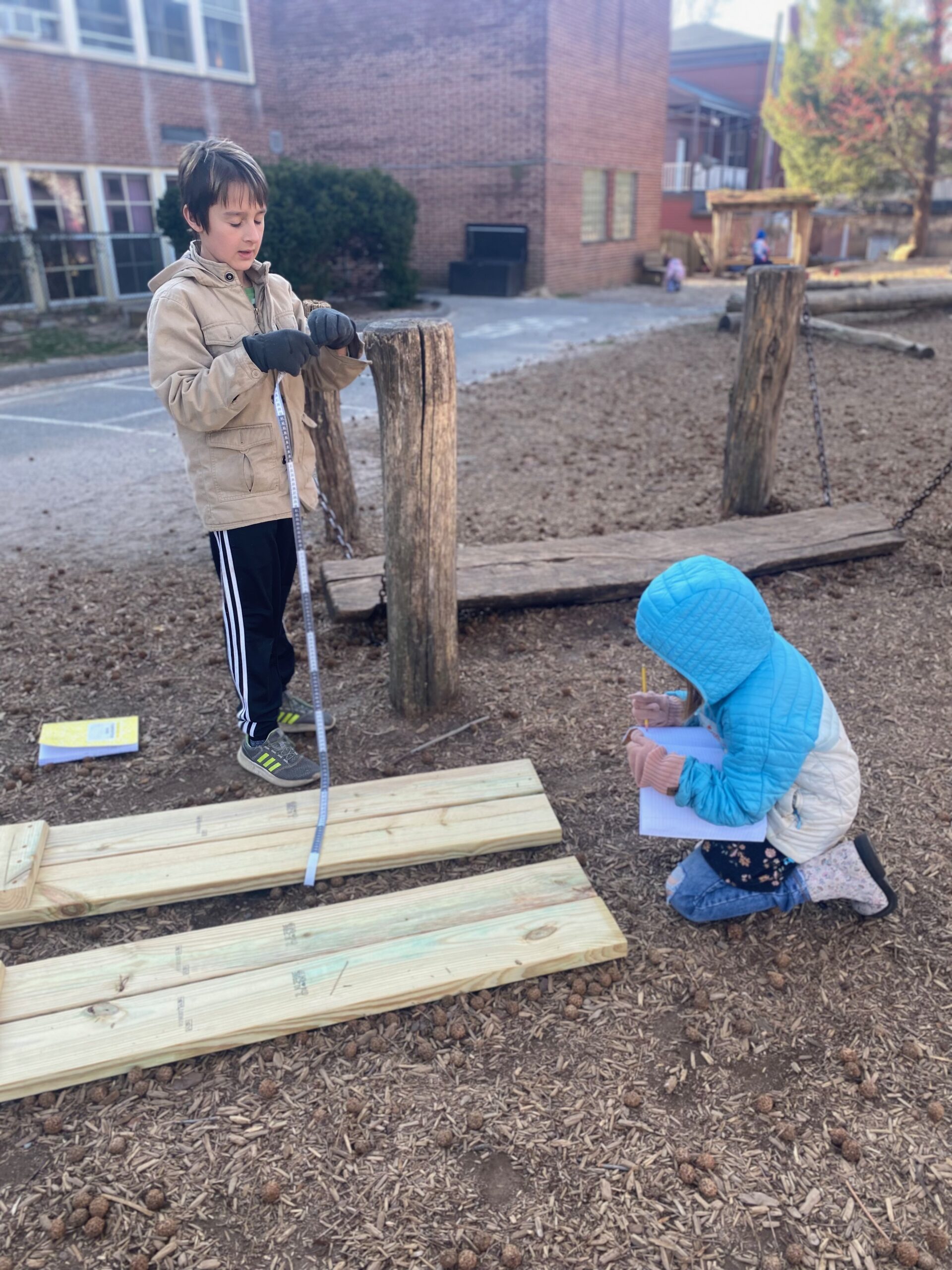

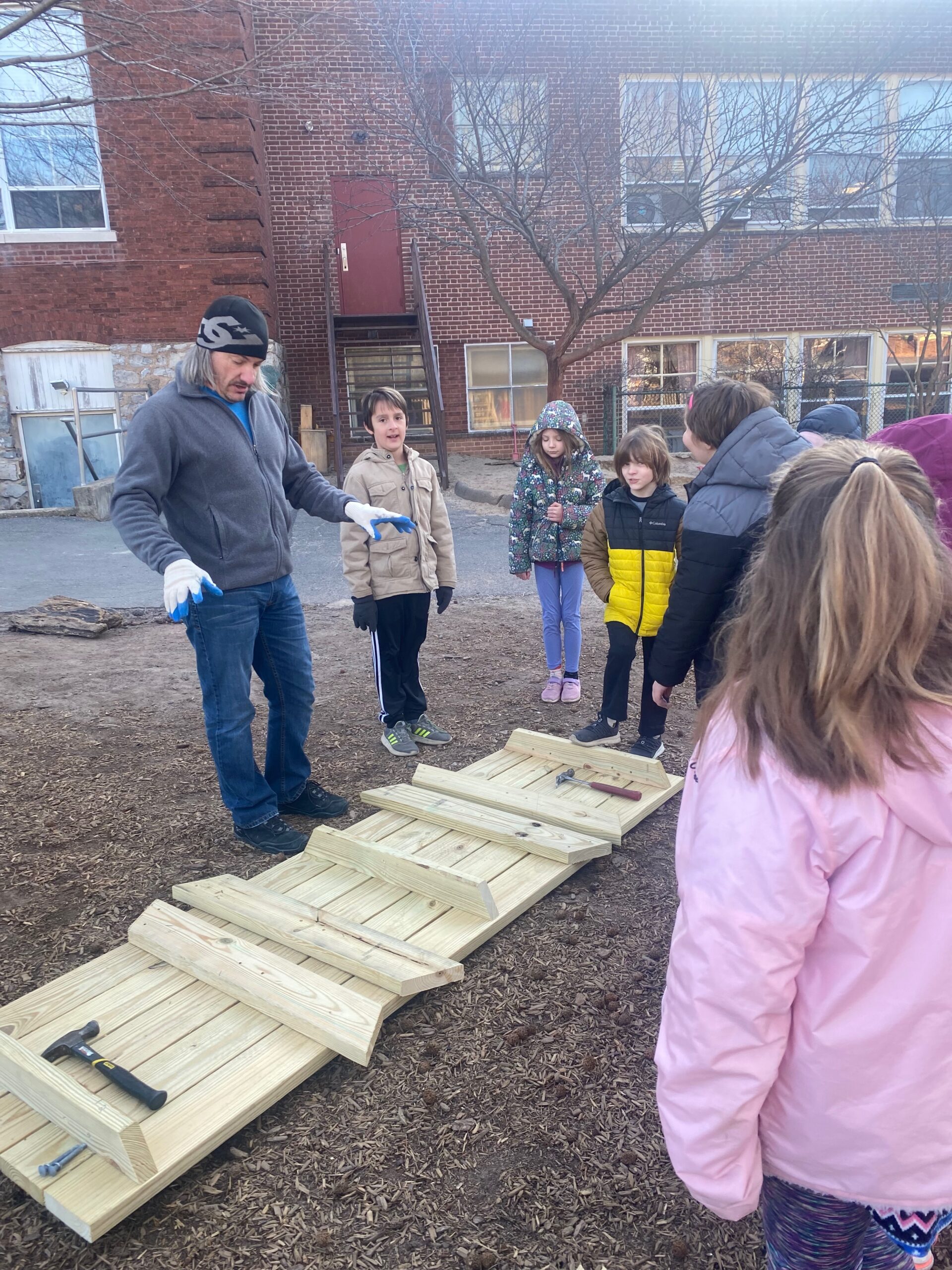

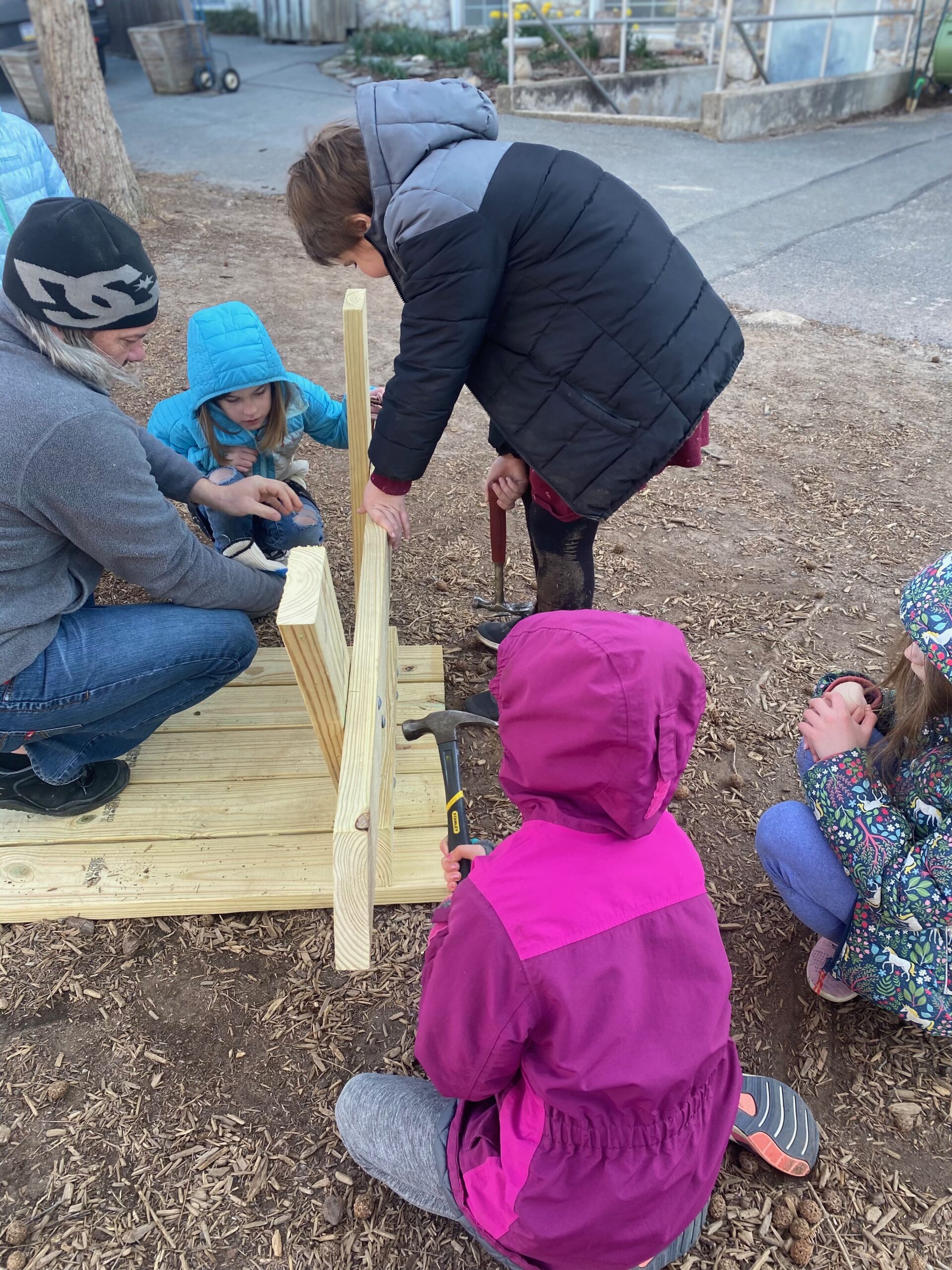

We found building plans and set to work with the help of a class parent! The students drew and measured the dimensions of the table. A wonderful class parent handled the bulk of sawing and measuring. This parent brought the materials to our school and we assembled the picnic table during our morning main lesson time. The students used different kinds of tools and learned the processes of building a project. We utilized our math, listening, and sharing skills as we learned how to work together on a large project.
In the end, my students and I had a great time doing this project. It brought the whole class together in a new special way. A few students said to me, “Mrs. Davis we did it! We created this!” The joy this project brought my students is like no other. Also, it is a wonderful lesson for them to see how they can build something with their hands that will benefit future students and generations to come.
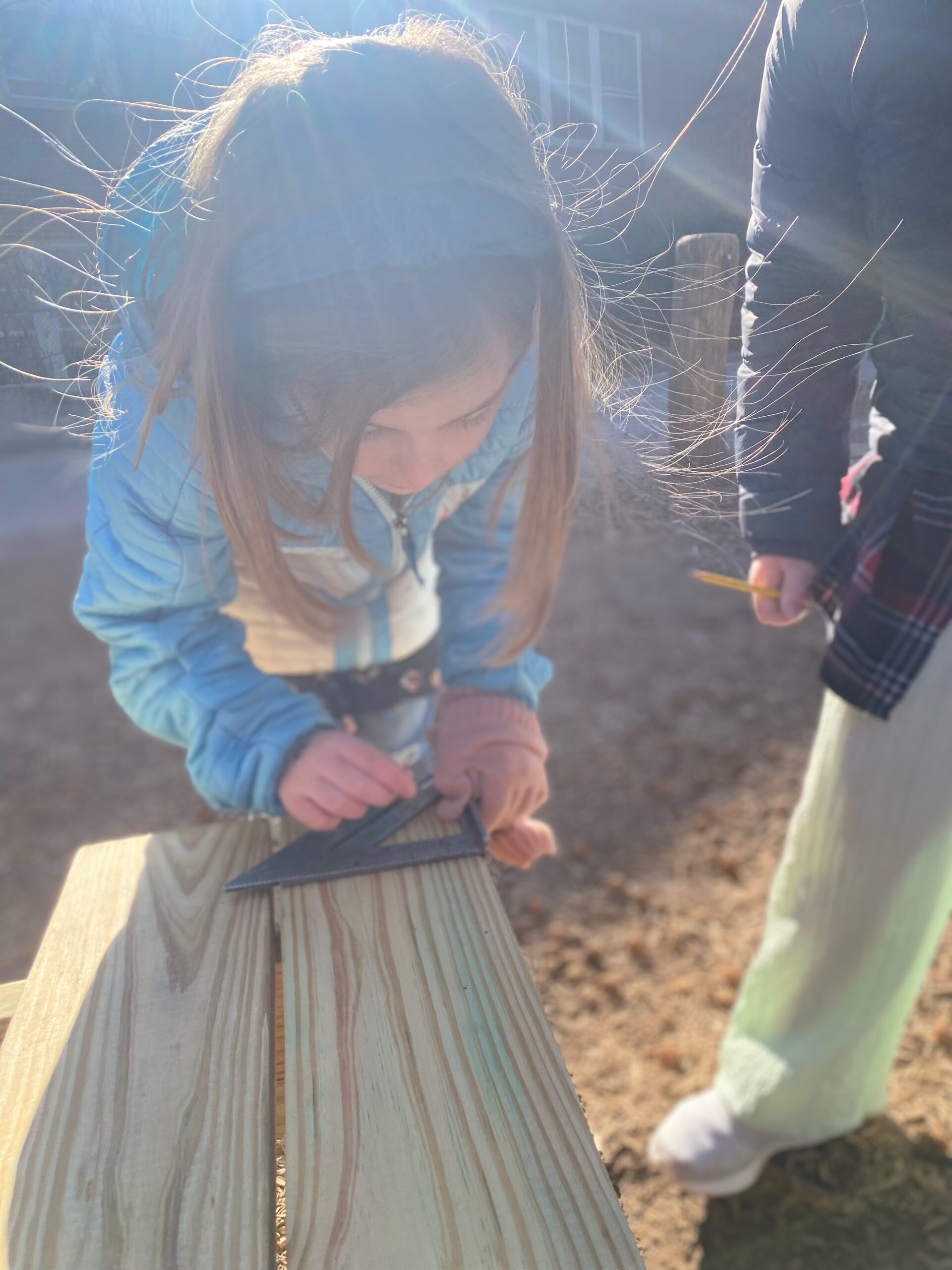

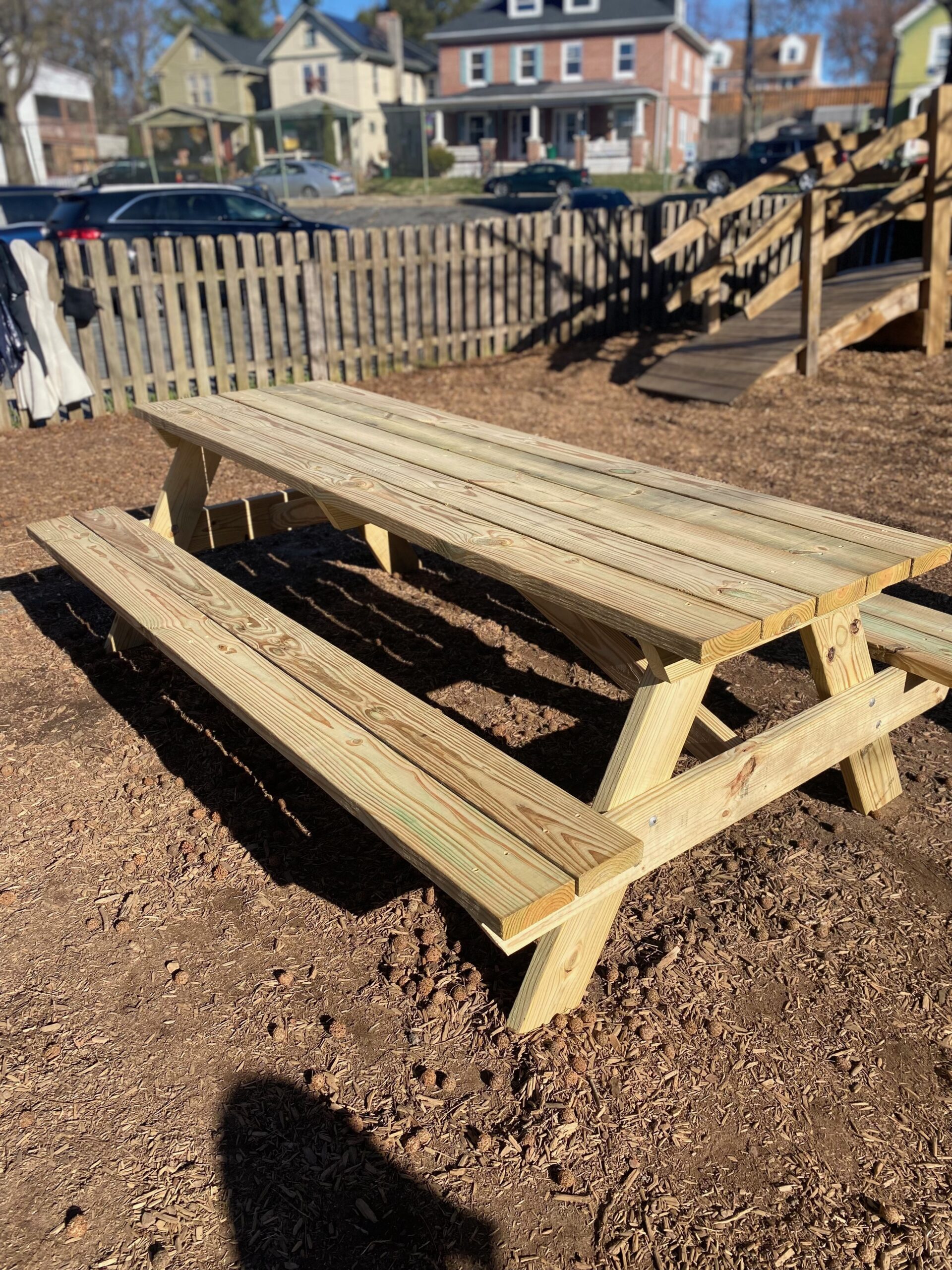

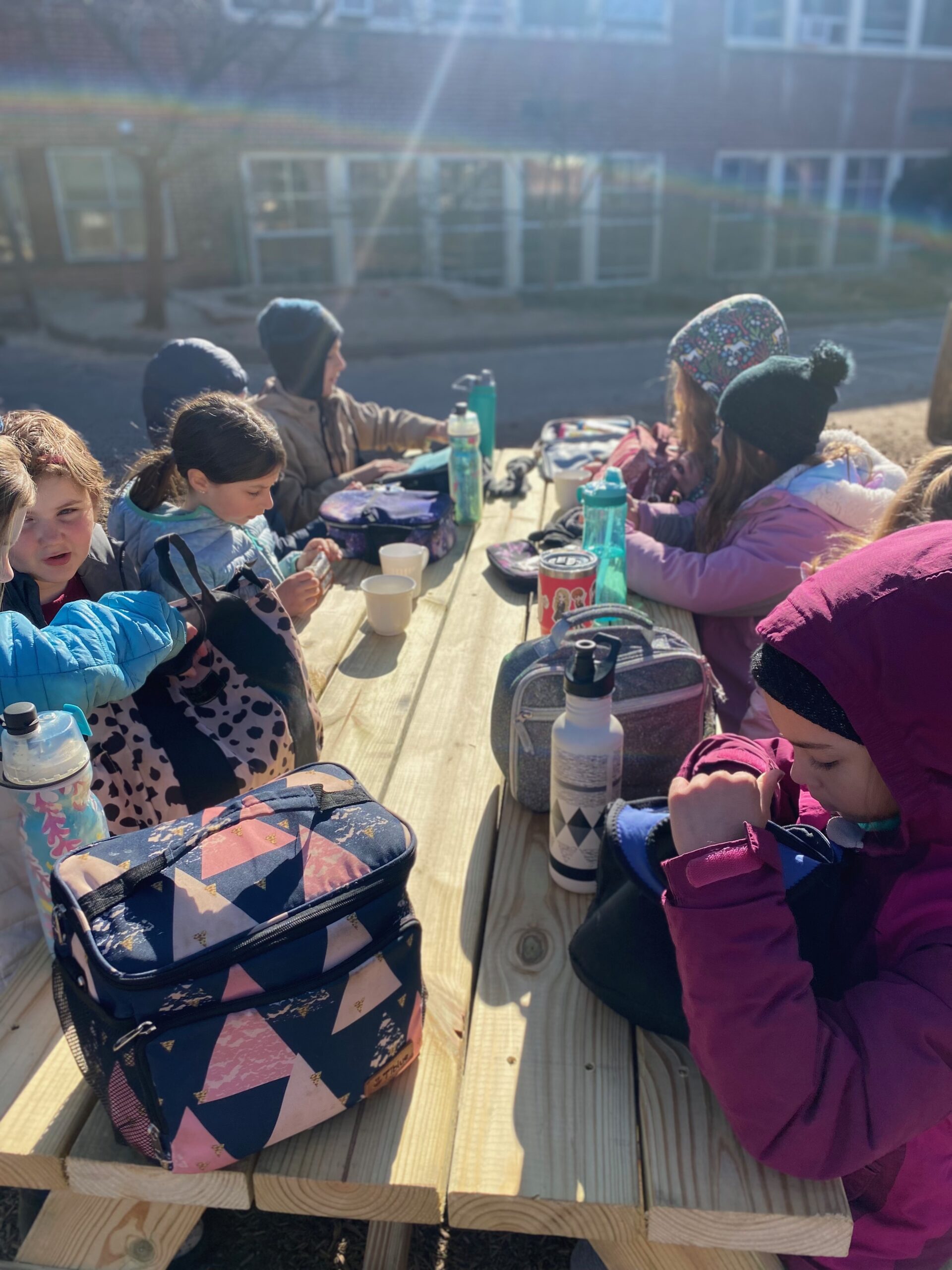

SWS Community Highlight: Parent Asia Pecora
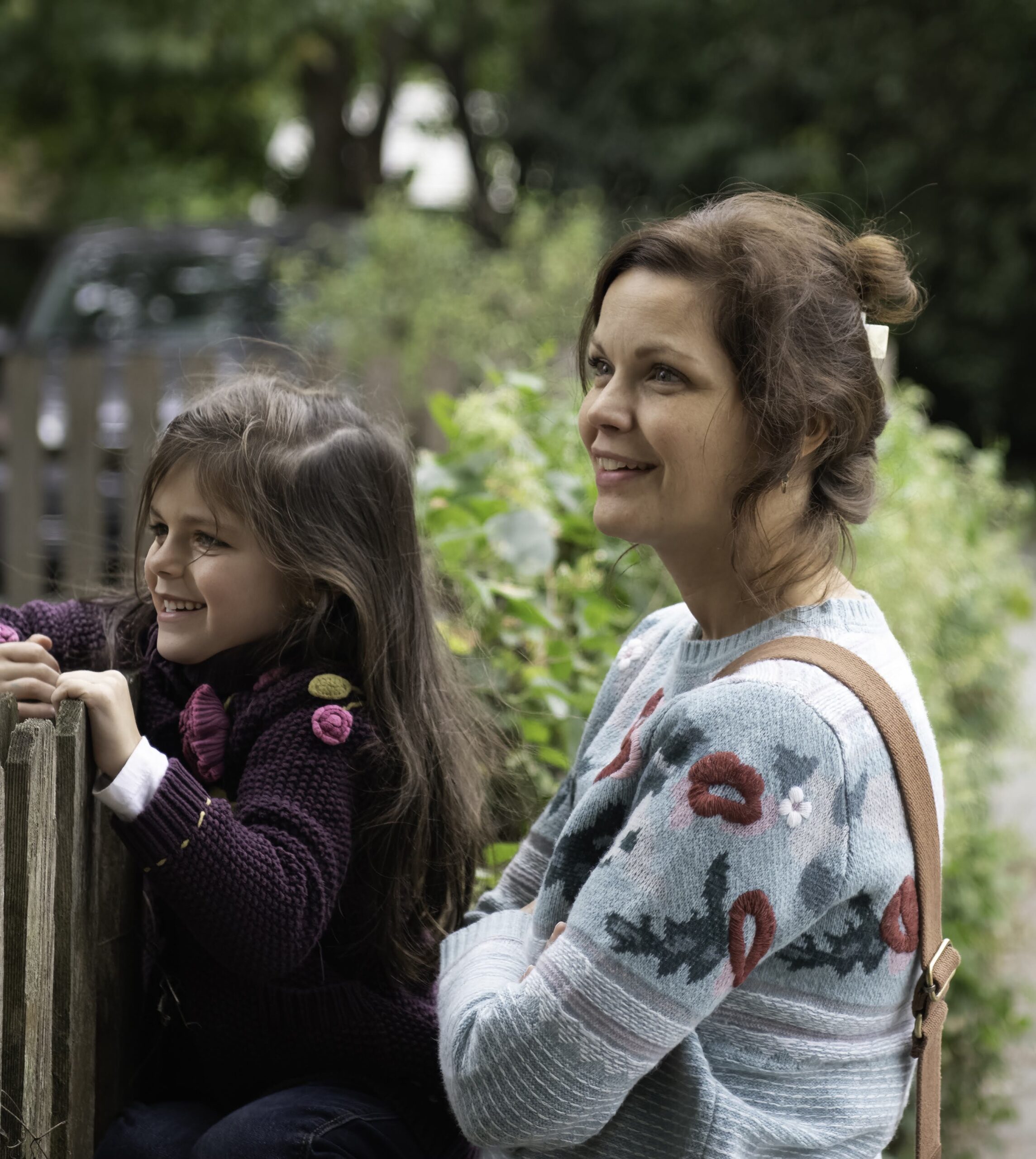

How long has your family been a part of the SWS community?
My oldest, Ana, is in 6th grade and she was here for kindergarten with Miss Linda. It’s been over 7.5 years that we’ve been here, going on 8 years. For a family, it’s a very long time. Joe and I have been together 13 years so we've been a part of this community for more than half of the time we’ve been together! Luli is in 4th grade and she started with Miss Jessie as a Buttercup. And now Miss Jessie has Gisi. Joe and I have figured out that by the time all is said and done, it will be 20 years, god willing, that we are here - by the time Gisi has gone through her 8th-grade class. It’s been a part of the children’s lives for, you know, basically their whole lives. I really see the Waldorf school and community as a greater family to me. That’s how it feels to me. That’s why Joe and I are so, the word isn’t even invested (even though you do pour so much time, and money, and things into the school), but all of our hope, all of our dreams and aspirations live here. They live in our home as well but they live here with the people who are here.
What led you to Waldorf education?
When I had Ana, we lived in Lancaster and we were both working full time. We were trying to find an early childhood option for her. We were right by the Montessori school and we went there. Ana didn’t thrive there. She was my first child and I didn’t really know what I was looking for, but I knew it wasn’t there. Joe actually came here without me and met with [former Admissions & Marketing Director] Michelle Wann and got a tour of the school. Joe came home and was just like, “that’s the place. That’s where she’s going to go.” And that was it.
Ana immediately just loved it here. A lot of the physical work and play that we do here, it wasn’t like that at the Montessori school. She wasn’t getting the bigger play, the gross motor skills there. The social aspect in early childhood education here was everything that our children needed.
Did you have any concerns or apprehensions about Waldorf Education?
It sounds corny but coming here and starting in the early childhood program was like coming home. That’s what it felt like. So in that sense, intuitively, I had no hesitation. At the time we were a young couple and, you know, like rubbing pennies together but we have a very supportive family, in terms of getting them here, picking them up, while we work full-time. That was our biggest hesitation, how we were going to logistically make it work?
There was also this pressure because Ana received speech therapy. This pressure on the academic life of a child. When do you introduce that? What is a normal window for a developmental milestone? What does mainstream culture say about what your child should be doing at a certain time? And there’s so much information out there. We felt very supported in those questions here. We were able to have her get speech therapy in the home. We were able to kind of pick and choose what we wanted to do.
When we came here, we found a place where we were able to have meaningful conversations and we developed relationships with Miss Linda and Miss Jessie. So much trust was built. Like many people, Joe and I came in thinking that society, or education is trying to give the child meaning, to put the information into the child. We came to learn that through the child's play, they develop and find the meaning themselves. And then the child becomes a revelation to us. Once we understood that, once we were there, it was life changing.
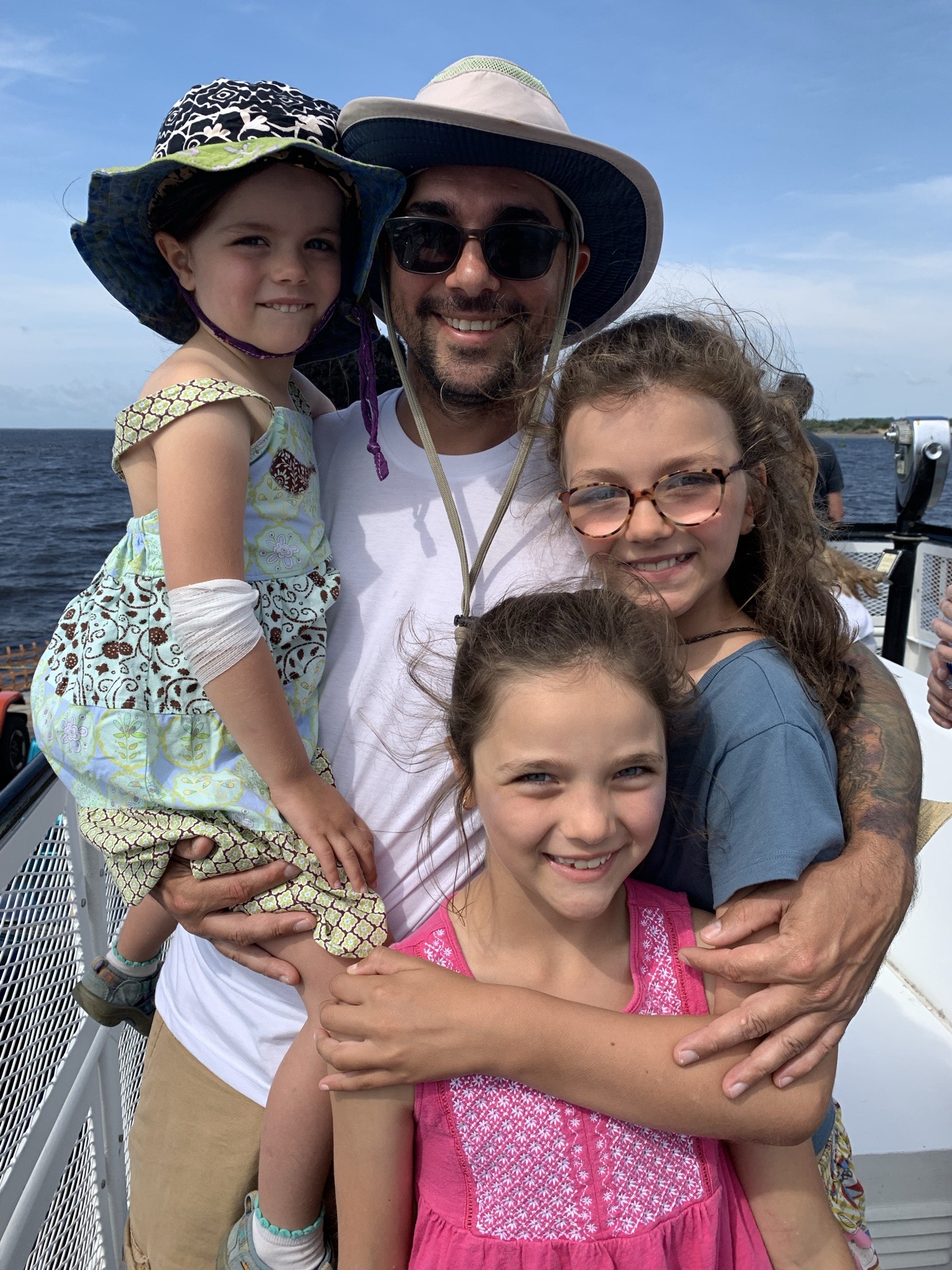

How has Waldorf education impacted your children?
They love to sing. They love music. They love to draw. They love to paint. They love to read. They love their friends. They love people. They love the birds. They love the dirt. They love everything. In early childhood and grades, there are all of the songs about the goodness in the world and all of that is instilled in them. It’s imbued in them because of Susquehanna Waldorf School. They’re just joyful and they love to come to school.
This is a bit anecdotal but Gisi was talking about making the Kindergarten auction project. She was saying, “we were working on that driftwood tree and it’s going to bring a million to the school, mom! A million! So the school can be there for a long time.” Clearly, she hears mom and dad talking about the importance of the auction but she loves it here. She feels part of the community too. She knows that what she does is important and that it’s valued. I think she will take that with her. She feels a part of the community. It’s a protective place. As a social worker we talk about protective factors in people’s lives, and this school certainly is that.
What keeps you here?
Going back to the community. For the children, you see that play out in their lives every day. But Joe and I have formed lifelong friendships with other parents and grandparents at this school. We are also benefiting from the community. I think it’s really difficult out there in the world to find meaningful communities where people and children belong. We have a sense of freedom here in our community.
At SWS, there is an understanding of the spiritual life of the child... and it's hard to find that. Well, I found it here. And I know for some people, the spiritual part of Waldorf education, it’s not something they consider. There are other aspects of the education they value. For me, it certainly is part of my choice to stay here.
I love the curriculum - they study a wide variety of culture and human experiences. The cultural studies here at the school, you cannot find that in public education. That human work that we do here, that has kept us here. It has enriched our lives.
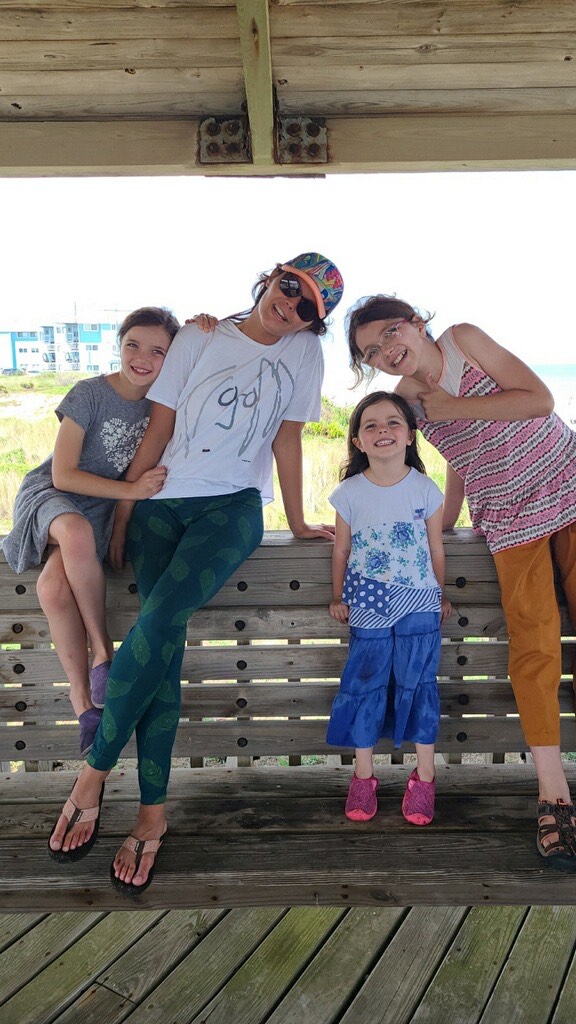

How has Waldorf education impacted you as a parent?
It’s built up my courage as a parent. It’s built up my strength. It’s really beyond words what the school’s done for me as a person. I know that I have made deep connections with other people here. I’m not sure that I would’ve been able to have deep connections with my children’s teachers in a different setting. I respect and value their teachers and the leaders here so much. And that has changed me because I think, growing up for me, I can only think of one or two positive relationships with teachers. So it’s given me hope in what a community can look like. Where people can thrive and live and be free. It’s given me hope and it’s given me the courage to keep going.
What's your favorite thing about the SWS community?
My favorite thing about the community: the colors, the smell, the food, the music, the joy, the humor, there’s a lot of humor here. I think it has to be the children, though. Just seeing their faces, watching them dance, watching them sing, watching them play.
When and How is Reading Taught in a Waldorf School?
Written and compiled by Lisa Sweeney, SWS Co-Pedagogical Chair.
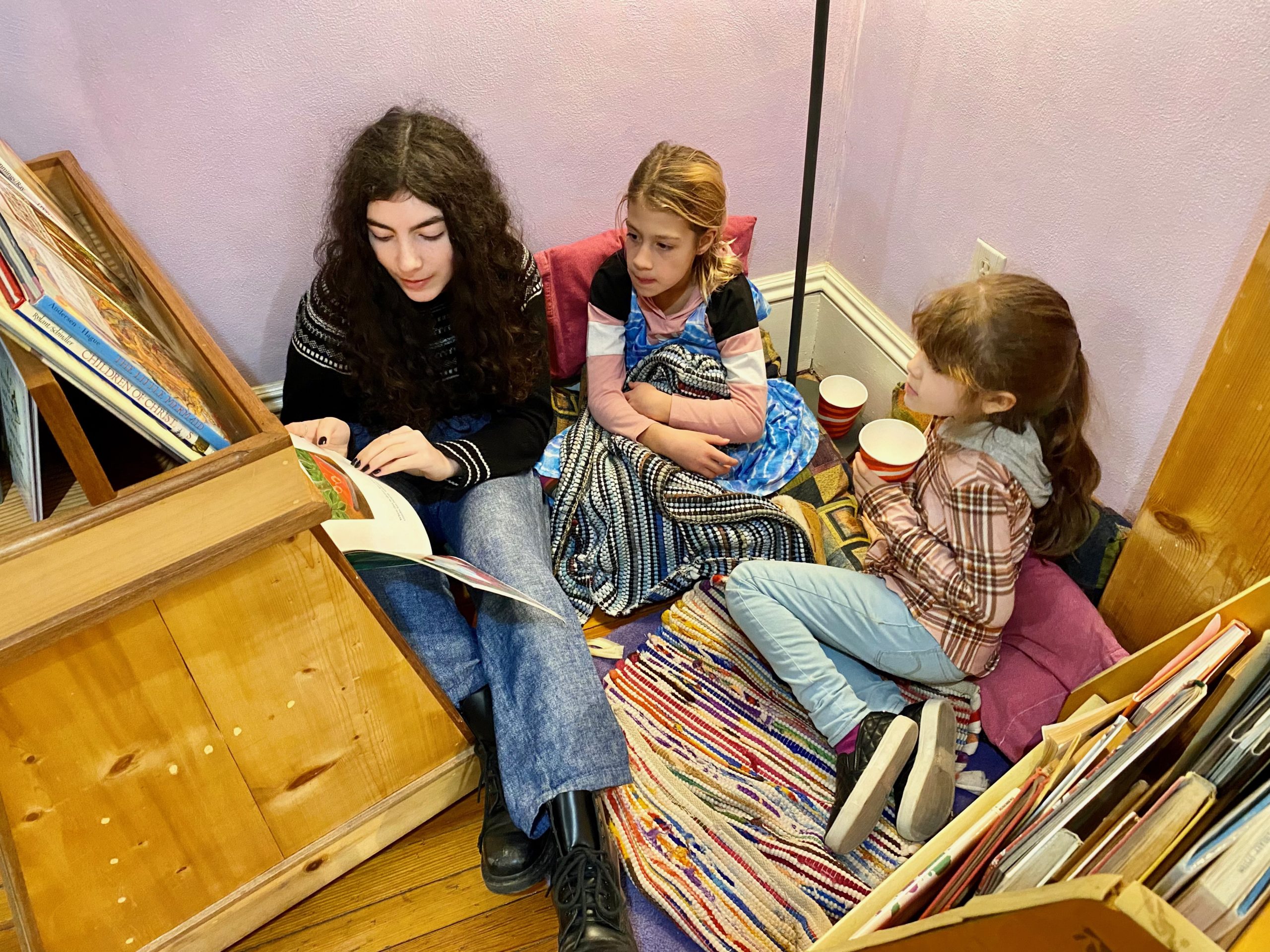

When and how is reading taught in a Waldorf School? This may be the most frequently asked question by parents as they consider Waldorf education. The foundation for literacy begins even before the first grade in the movement, song and verse of the kinder years. Our goal at SWS is to foster passionate readers who continue reading for pleasure throughout their lifetimes. To that end, we introduce reading in a developmentally appropriate way.
“Waldorf education’s approach to reading and writing is different from traditional methods seen in public schools. This has led to a common misconception that Waldorf students are taught reading “late,” but the truth is that Waldorf educators are instead building foundations for reading comprehension before decoding. This leads to a deeper understanding and appreciation of content students read and ultimately enhances comprehension.” AWSNA (The Association of Waldorf Schools of North America)
The following excerpts from Dianne McGaunn’s and Kat Marsh’s research article, How Reading, Writing, Literature, and Language are Taught in a Waldorf School further elucidate this subject.
“A common misconception about Waldorf literacy education is that Waldorf schools do not teach children how to read until second grade. While it is true that decoding (learning how to read through a phonics approach) is not specifically taught until late first or second grade, early childhood educators and first-grade teachers concentrate on building a strong foundation for literacy learning through drama, artistic endeavors, writing what students know by heart, healthy play and movement experiences, beautiful recitation of poetry and many other forms of learning that are multi-sensory experiences. Therefore, when students are taught a traditional phonics approach in second grade, they have a deep foundation to aid in the reading process.”
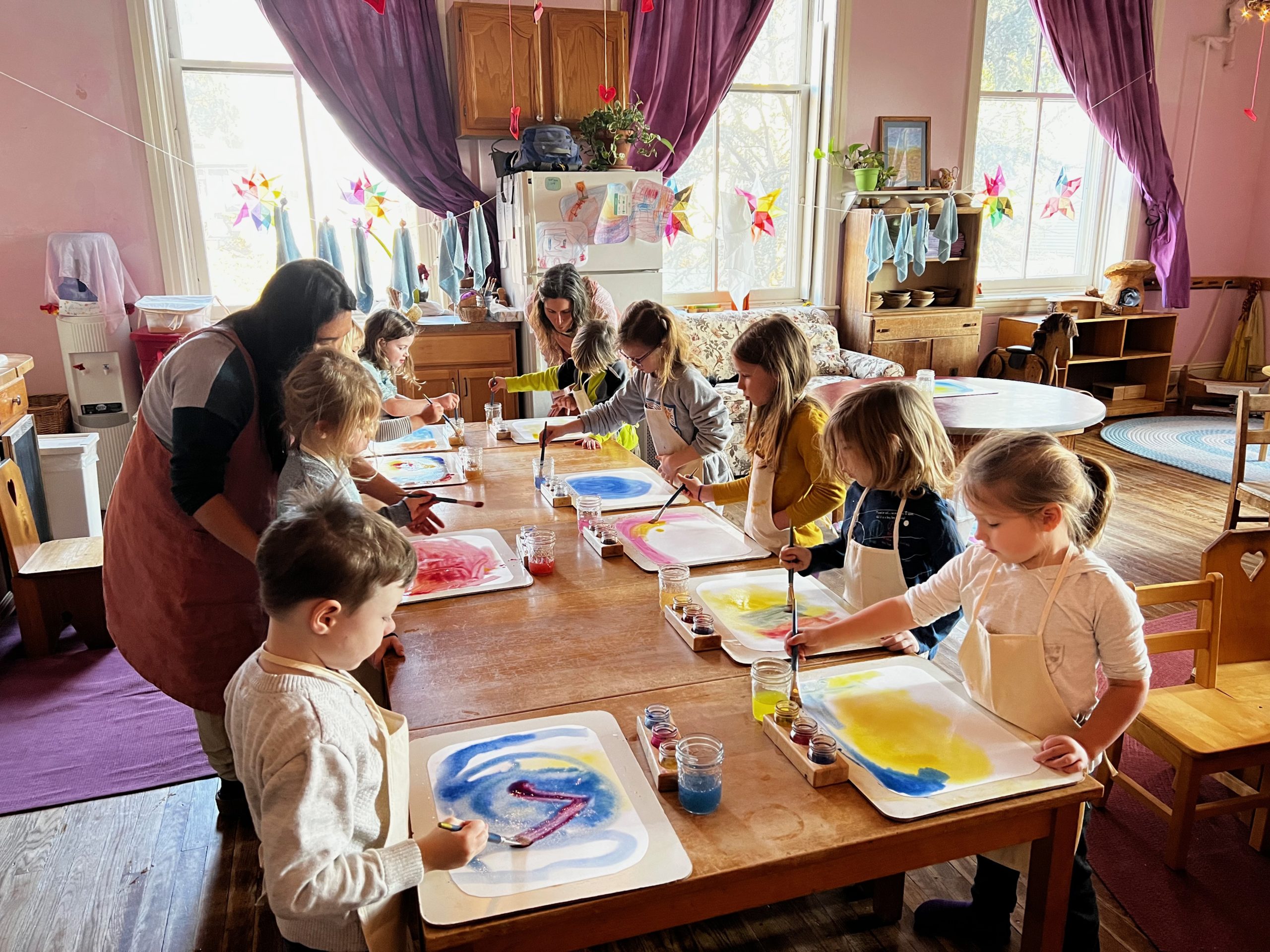

“Waldorf teachers understand the importance of developing fine and gross motor movement skills for writing and reading. In the early childhood classroom, activities such as cutting food for snacks, drawing with crayons, sewing, and modeling with beeswax help develop fine motor skills for smooth writing experiences.
Other gross movement activities such as cross-lateral skipping help develop the connecting “bridge” of the brain that orchestrates the processes between the left and right hemispheres of the brain, which is not fully developed until seven or nine years of age. This bilateral brain integration is critical for whole-word recognition and decoding words, two essential reading skills.”
“In addition to the importance of healthy movement in brain development and learning, the Waldorf approach to literacy follows the course of literacy development throughout human history: oral learning (speaking and listening), then writing (as in hieroglyphics), and only then reading. This progression and sequence or order of skills (movement, speaking and listening as precursors to reading and writing) supports a child’s development because it strengthens inherent skills aforementioned, and only then introduces writing skills which are the next step toward developing a broad understanding of literacy. Children taught in this sequence have a better understanding of the meaning of print and will come to the task of reading with purpose, comprehension, and confident engagement.”
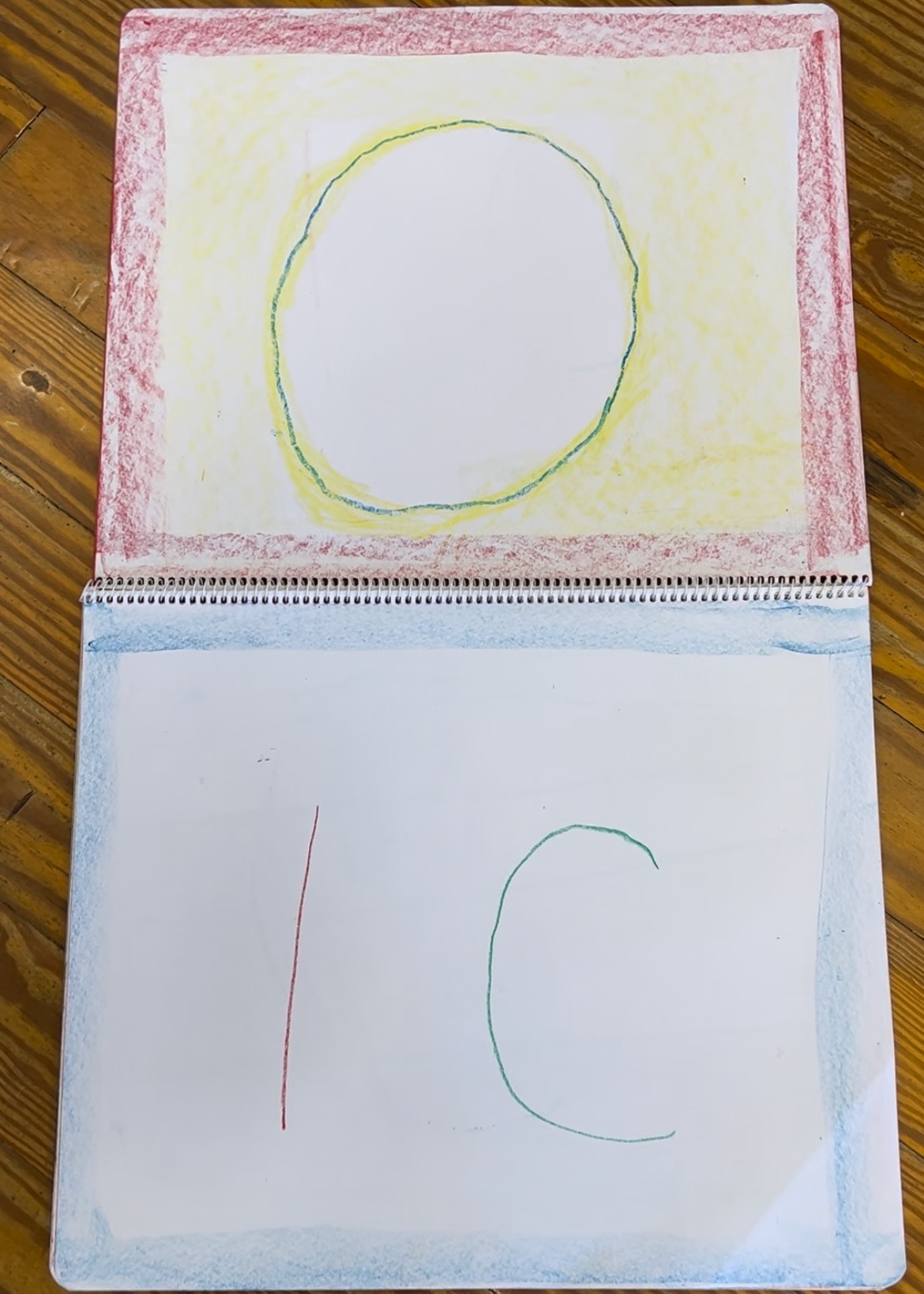

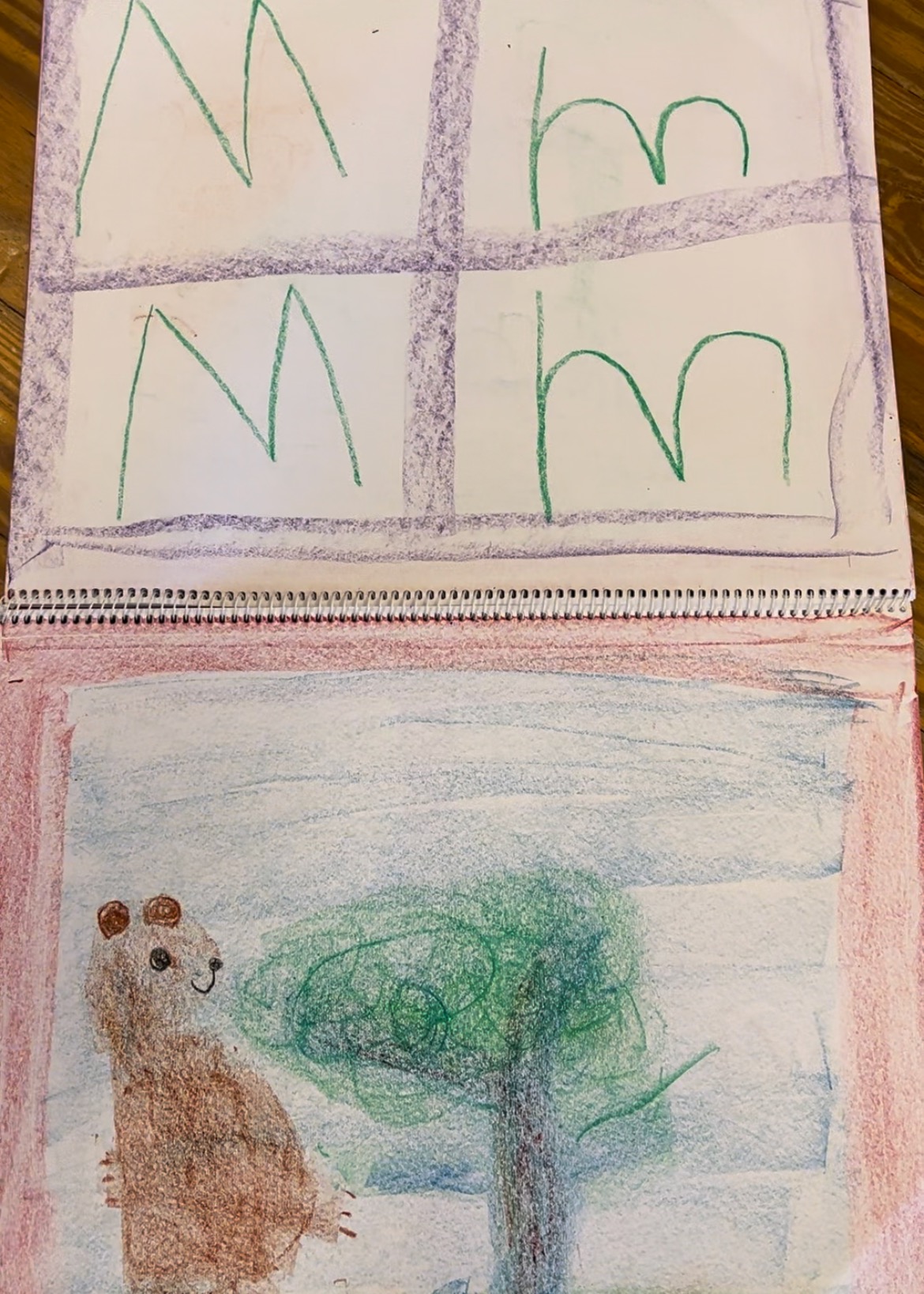

“Current research supports the idea that teachers can improve reading skills by having students write about what they are reading, teaching them writing skills, and increasing how much they write. In the Waldorf first-grade classroom, writing the letters of the alphabet emerges from daily imaginative stories thus giving students a meaningful basis for linking printed letters with sounds (as in the early relationships to humans with hieroglyphics). Students write simple words that they know, and gradually the skill of writing words and recognizing word families is used to build simple sentences.”
“The Waldorf early grades curriculum is rich in phonological awareness and emphasizes holistic literacy skills along with informal print writing to give students a stronger basis for formal print reading. Literacy development in Waldorf schools cultivates awareness, appreciation, and skill in both the spoken and written word, following a developmentally sound approach that helps to ensure that students claim a love of literature, language, and writing as part of their birthright.”
“In essence, the Waldorf approach to literacy is purposefully patient and thoughtfully builds a foundation for a life-long love of literacy, in its many forms.”
The article quoted above may be accessed in its entirety through the following link: “Early Literacy Learning in Waldorf Education.”
As Waldorf educators, the teachers at Susquehanna Waldorf School love to read and want children to love it too. That’s why we teach reading in a way that is attuned to the child’s physical and mental development. As in the old English song “A Jolly Good Book,” the love of reading is golden.
Oh for a book and a shady nook,
Either indoor or out;
With the green leaves whispering overhead,
Or the street cry all about.
Where I may read all at my ease,
Both of the new and old;
For a jolly good book whereon to look,
Is better to me than gold.
Into the Woods Jr!
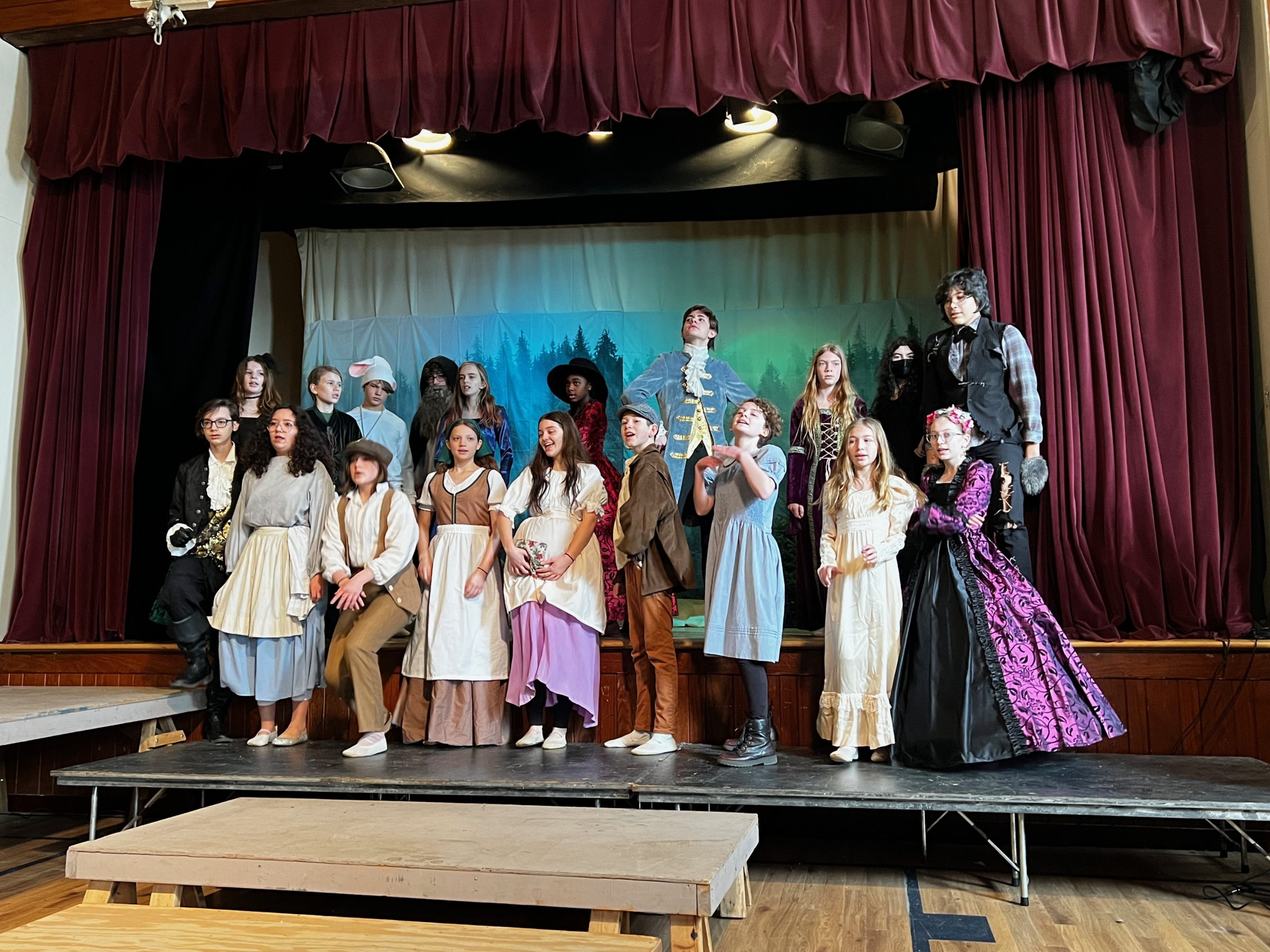

7th-grade teacher, Mrs. Dietz, and 8th-grade teacher, Ms. Tucker knew they were taking on a big project when they first began discussions of a combined 7th and 8th-grade performance of Into the Woods Jr. They knew it would take a village! This is why they asked their colleagues at the Back to School meetings in August if they were prepared and interested to help. They said yes and preparations began!
Class plays are a tradition within Waldorf education. Each class, from 1st through 8th, performs a play for their peers and families every school year. Class plays strengthen what students are learning in their curriculum, build camaraderie and cohesion among classmates, and increase self-confidence. So the 7th and 8th-grade students were no strangers to learning lines and performing. But an hour-long musical? It was a whole new endeavor!
"I wish...
more than anything...
more than the moon..."
As auditions approached, the hallways were filled with students and teachers singing the songs of the fun and lively musical. Students excitedly prepared. They wondered who would be cast as the familiar fairytale characters like Cinderella, Little Red Riding Hood, Rapunzel, and the Prince. Casting the musical was no easy task with such a talented group! The cast was announced. There was excitement. There was disappointment. As is the case in all Waldorf school plays, all students were included in the cast. Rehearsals began!
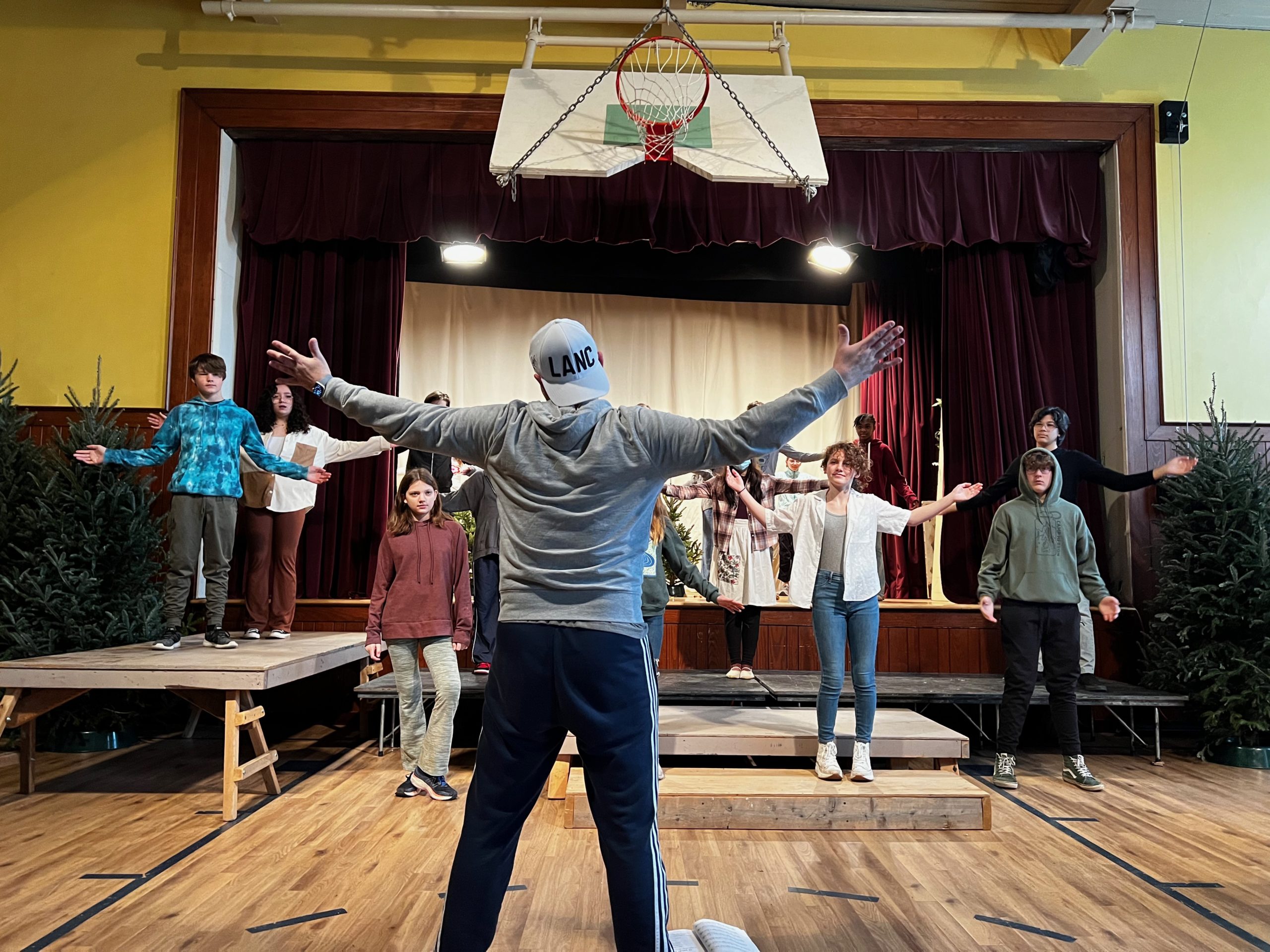

7th and 8th-grade students gathered every day to rehearse the performance. In addition to the vision and support of Mrs. Dietz & Ms. Tucker, they were fortunate to have SWS music teacher, Mrs. Radanovic, professional choreographer, Cody Smith, and pianist (and SWS parent), Justin Badgerow to help bring the creative vision to life. Students learned the music, their lines, cues, and choreography. They helped build sets and brainstormed on special effects. They created beautiful handmade posters. There were good days, which were celebrated. There were bad days, which students persisted through.
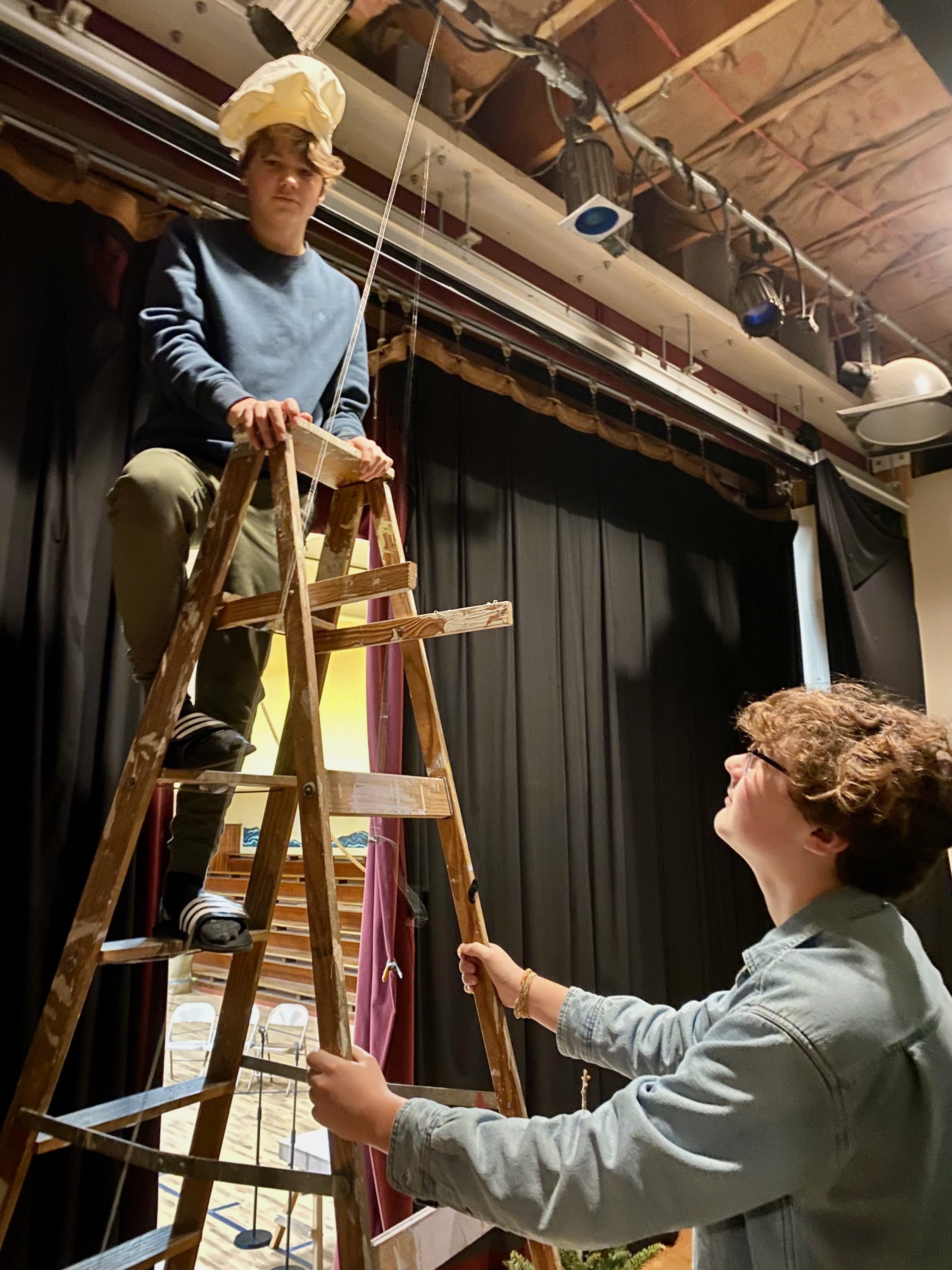

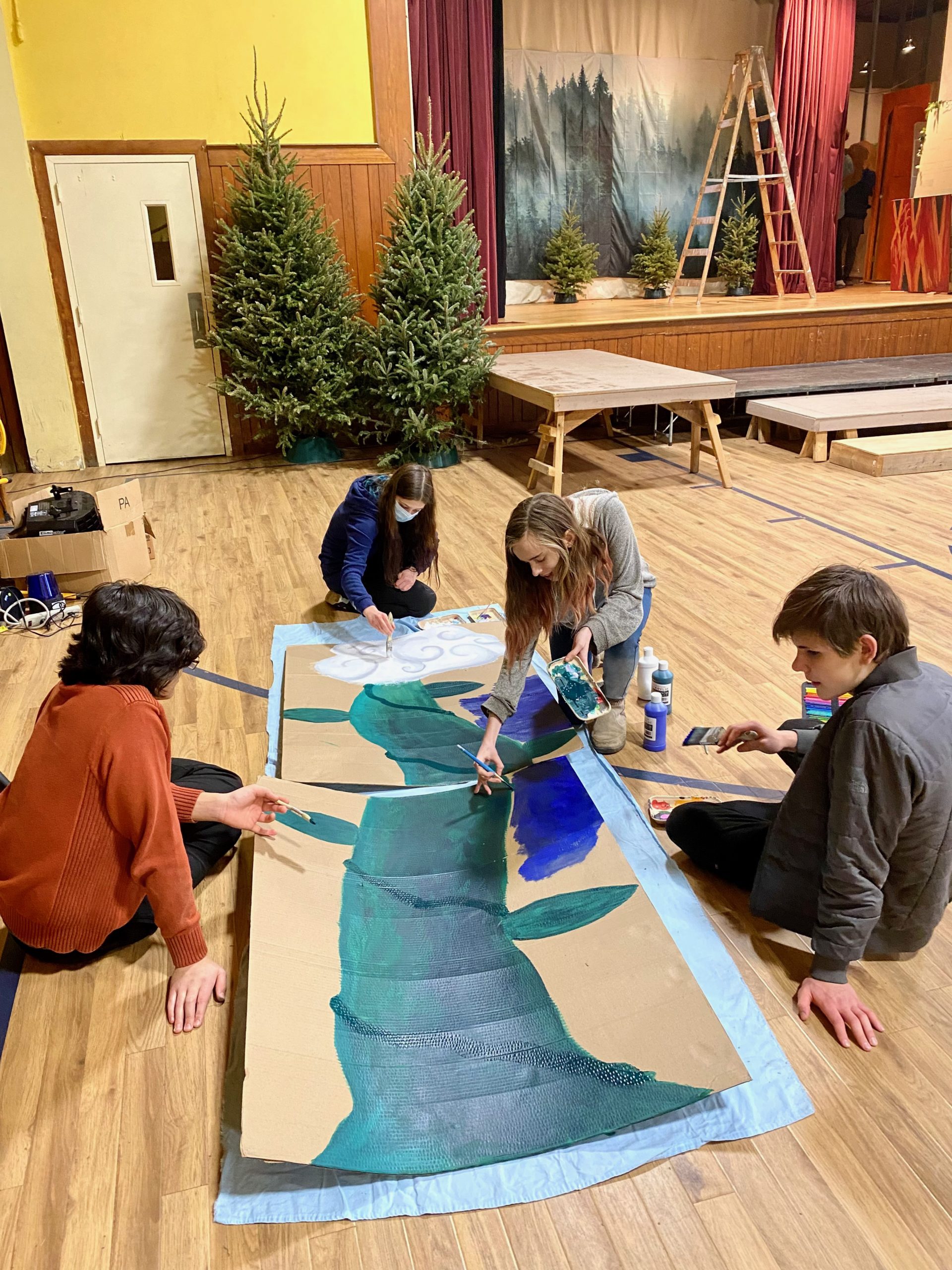

Waldorf teacher, Lawrence Joseph Glatt, explains the importance of performing a musical in middle school in the recent Performing Arts edition of School Renewal Magazine, "teaching middle school students that they are being seen, what they do matters, and that they can choose what they present to the world." He goes on to explain that musicals offer, "students at this age glimpses of what they can become."
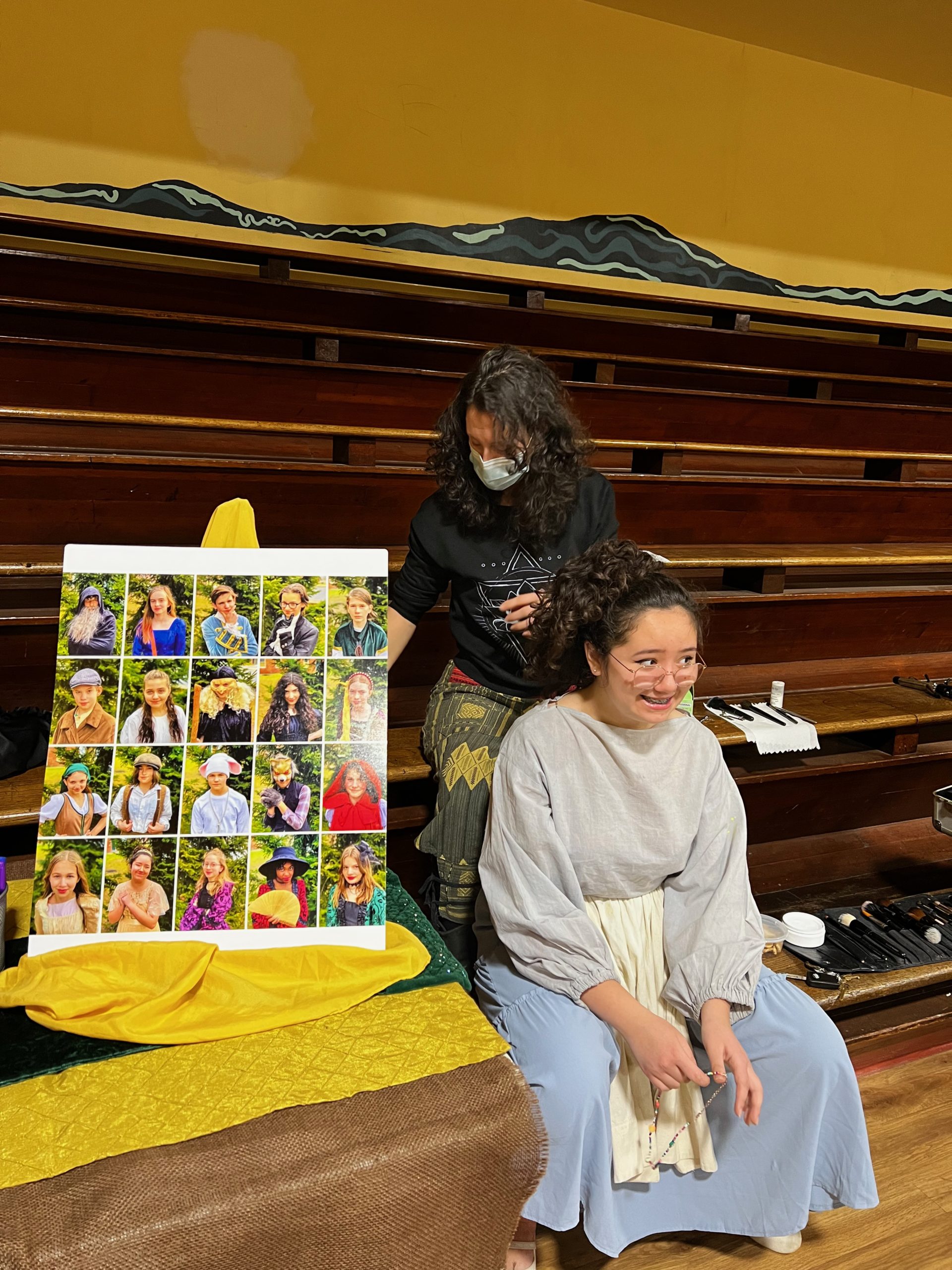

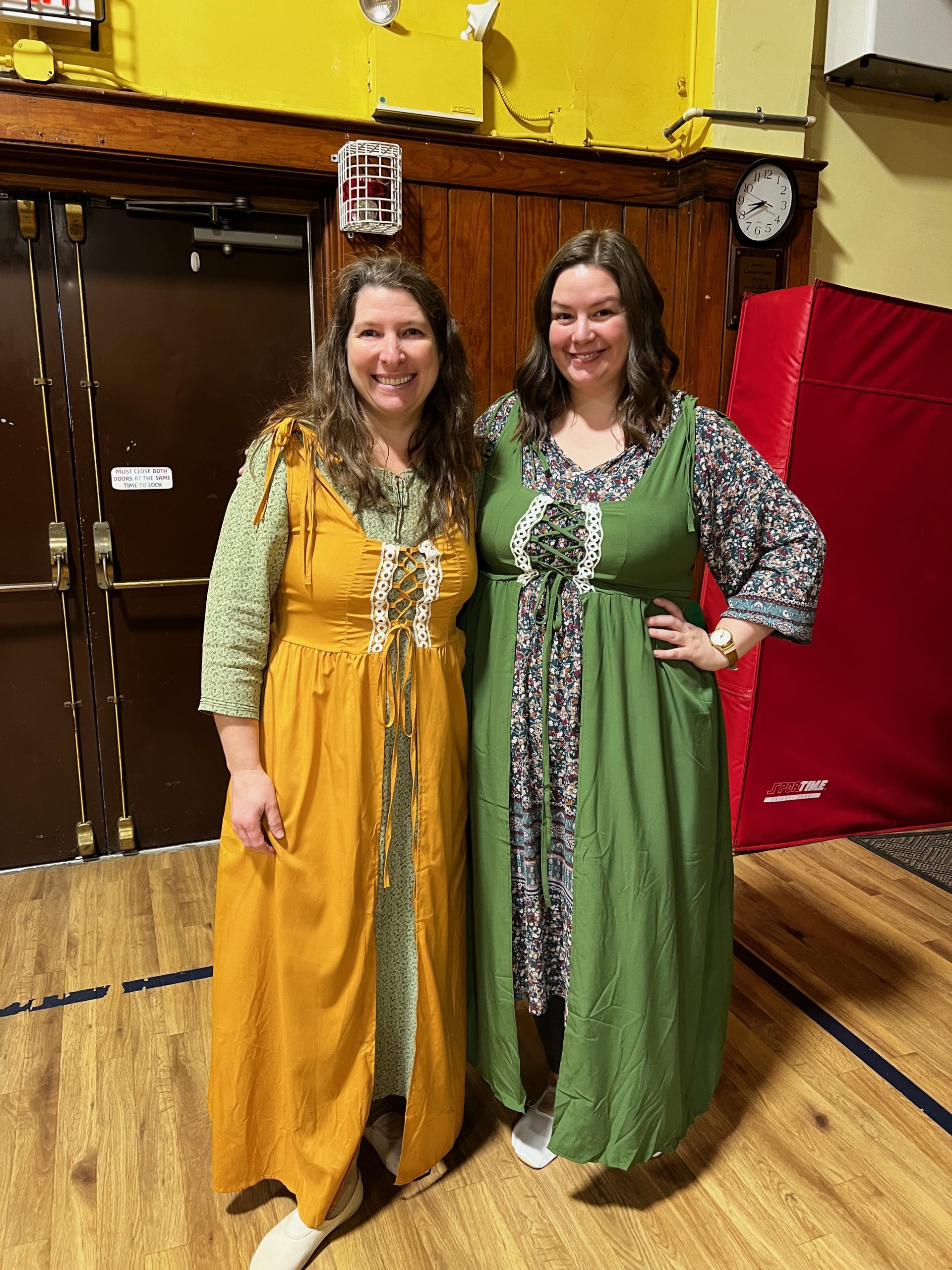

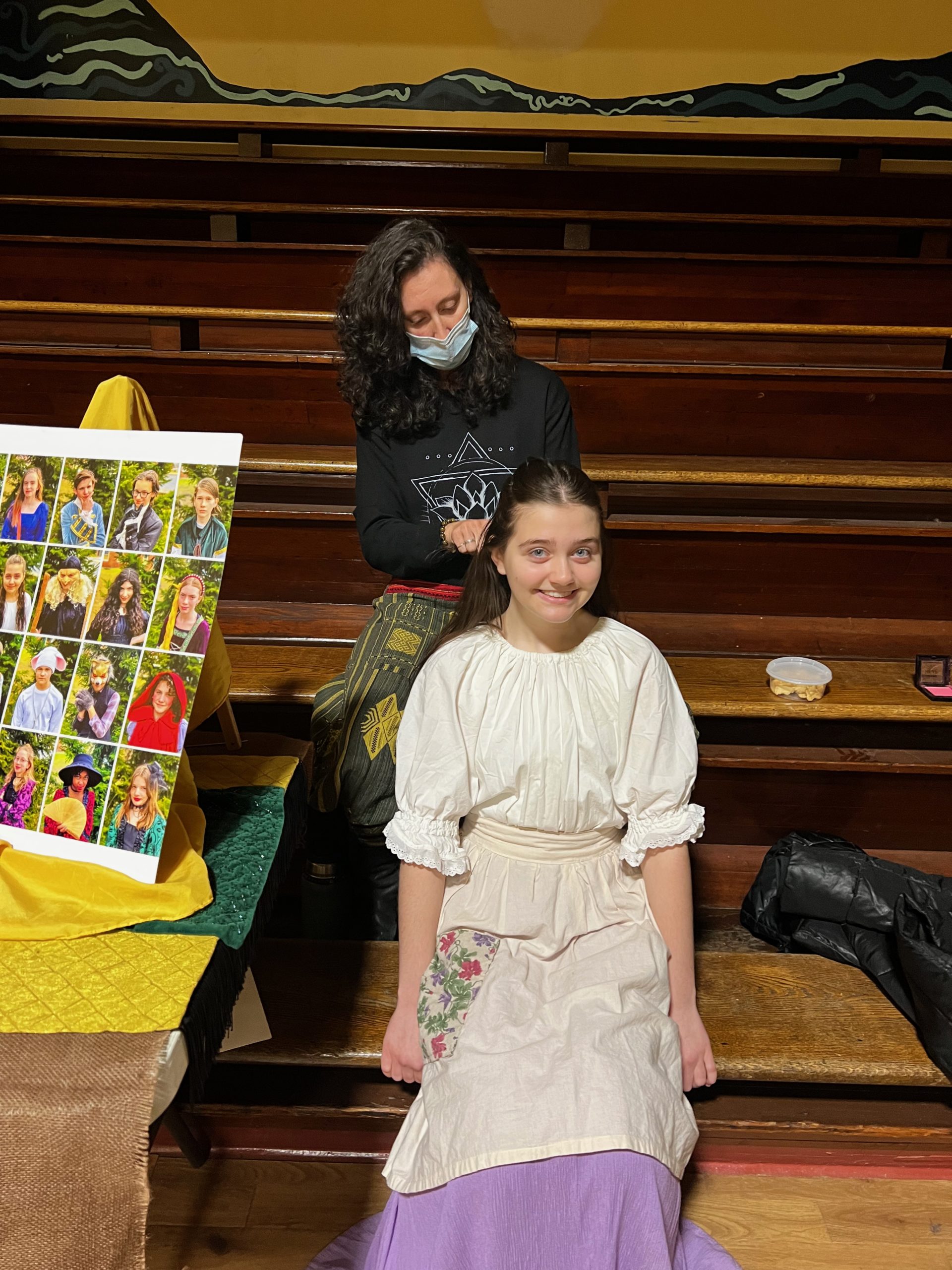

One could feel the nervous excitement in the air as students prepared for their first performance. Students warmed up their voices, received the finishing touches on their makeup and costumes, and the show was ready to begin! This was a very special performance as it was for their fellow Waldorf students. 1st through 6th-grade students eagerly filled the seats and soon the gym was filled with song, laughter, and amazement. Standing ovation! A 2nd grader was overheard saying, "that was better than any movie I've ever seen!!" as the show came to a close. The 7th and 8th graders were treated as celebrities as students gathered at the back of the gym to collect autographs. The 7th and 8th graders went on to perform three more times to sold-out houses!
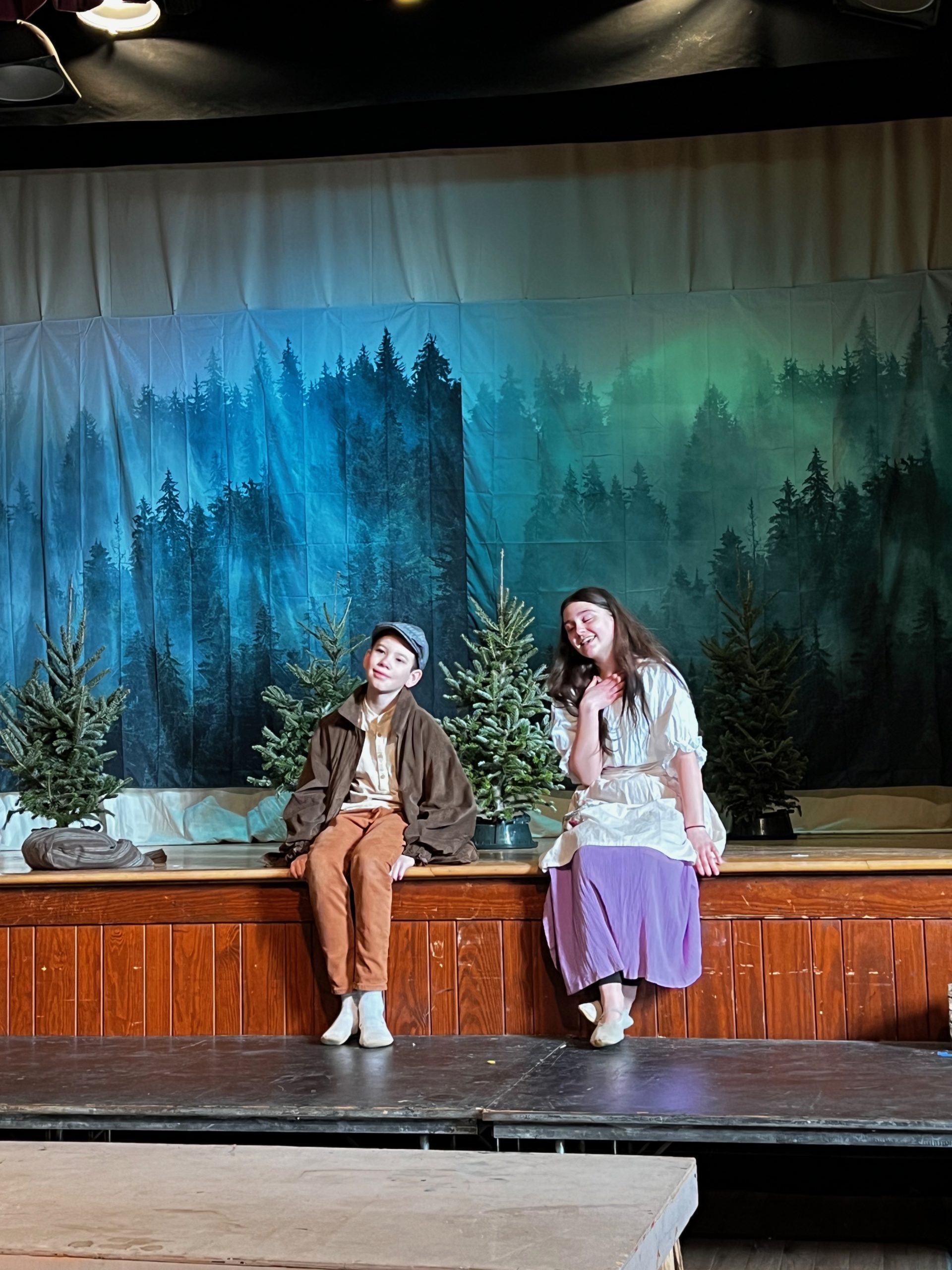

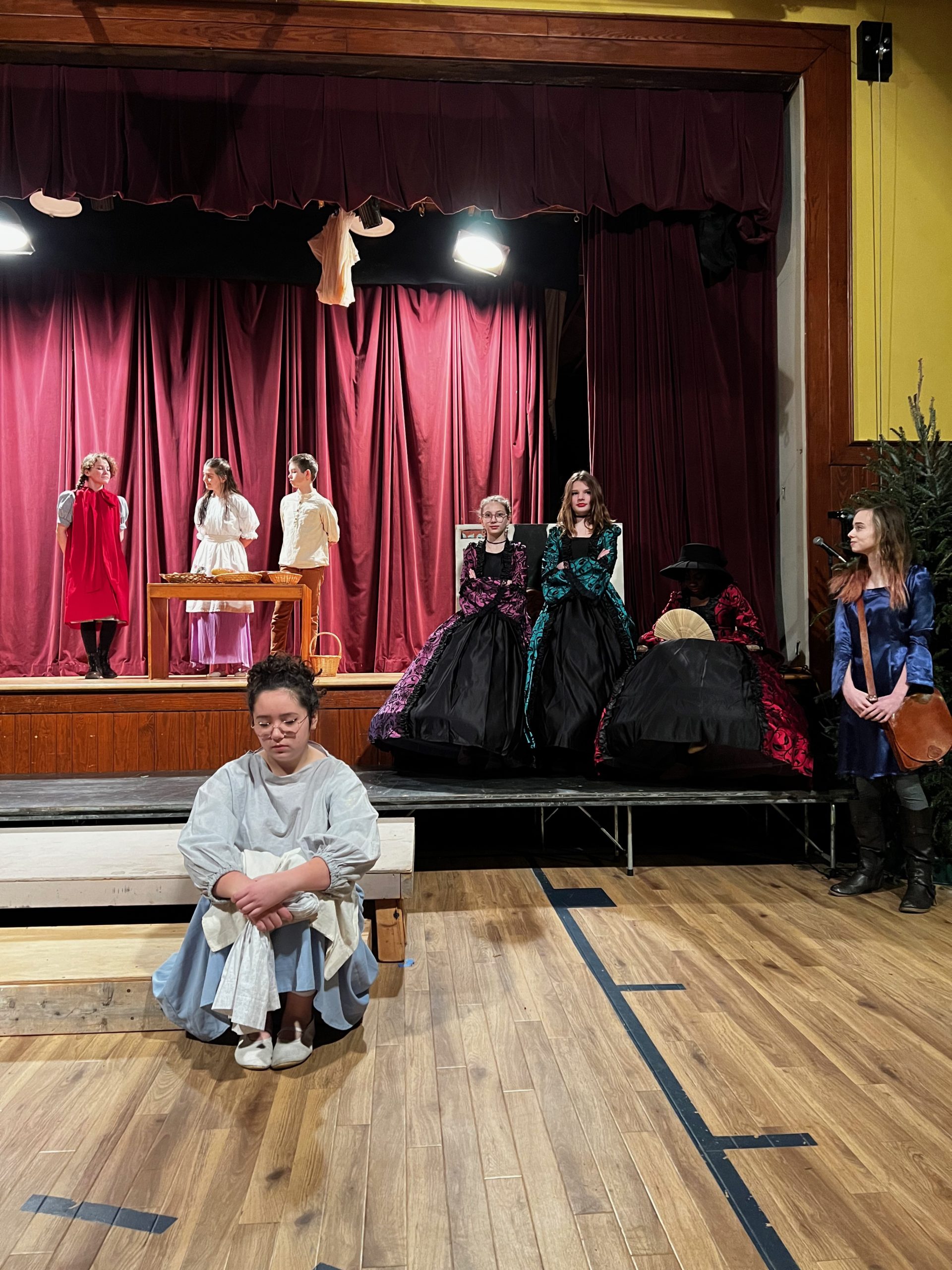

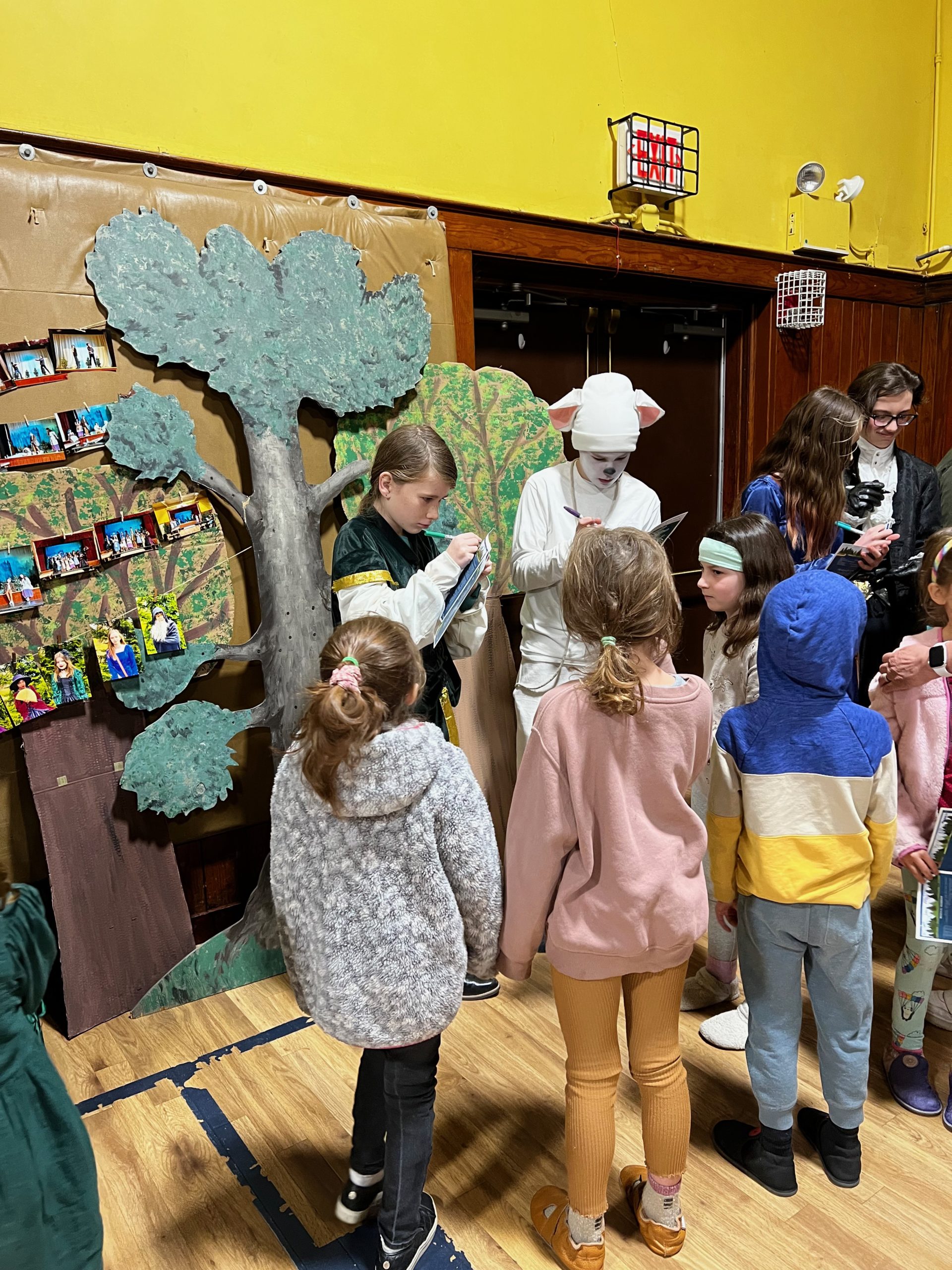

“And it came to pass, all that seemed wrong
was now right, and those who deserved to
were certain to live a long and happy life.
Ever after…”
Congratulations to all involved!! Special thanks to teachers extraordinaire Mrs. Dietz and Ms. Tucker for their hearts and vision; Mrs. Radanovic for all of her support along the way; Cody Smith for his expert choreography; Justin Badgerow for his excellent piano skills; Liz Pargament for her brilliant organizational support; and Andrea Huber for her skilled make-up and hair styling!
Works Cited: Glatt, Lawrence Joseph. "Why a Musical in Middle School?" School Renewal, Fall 20222, pp. 11.
SWS Community Highlight: Class Teacher & Alum Parent Melissa McIntyre
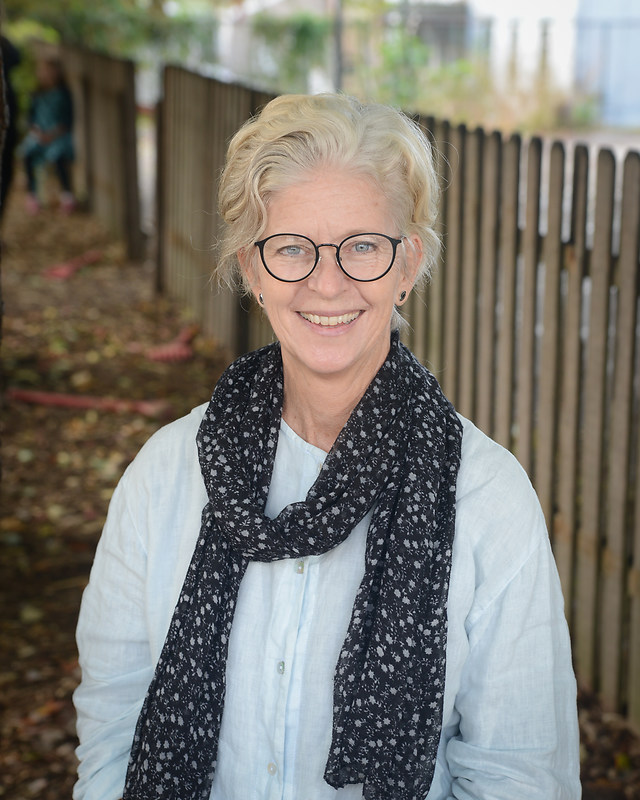

How long have you been teaching at SWS and what class are you currently teaching?
I just found out that it is exactly twenty years this month! I was hired as a kindergarten teacher in January 2003. It's flown by! This is my third time teaching 4th grade. I taught kindergarten for a couple of years and then there was a rising 4th grade that needed a teacher. My background was mostly in elementary education so I jumped in. That was my first class. I took them through 8th grade and then I went back around, took a class 1st through 8th grade and they graduated in 2019. I started with this class and now we’re in 4th grade. They’ll graduate in 2027.
What led you to Waldorf education?
We were a family down in Orlando, FL, we had three boys, and our oldest was starting 1st grade. He went to this lovely little public school that my husband was teaching at but he had 15 minutes of recess and 40 minutes of homework as a 1st grader. My shining, bright guy was becoming stressed out. A friend of mine said (she was from PA), "Melissa, you’re Waldorf-inclined!" At that time, 20-plus years ago, there were only Waldorf initiatives in Florida and there were none where we lived. My mom lived up here and we decided to make a big move. We visited PA during a December break, Jim had an interview in York city to teach, and we swung by SWS to tour the school. We knew immediately that we were coming here. It was that quick. We wanted this for our boys. I was a parent here for 2 or 3 years before I joined the teaching staff. All 3 boys were blessed to come through the school.
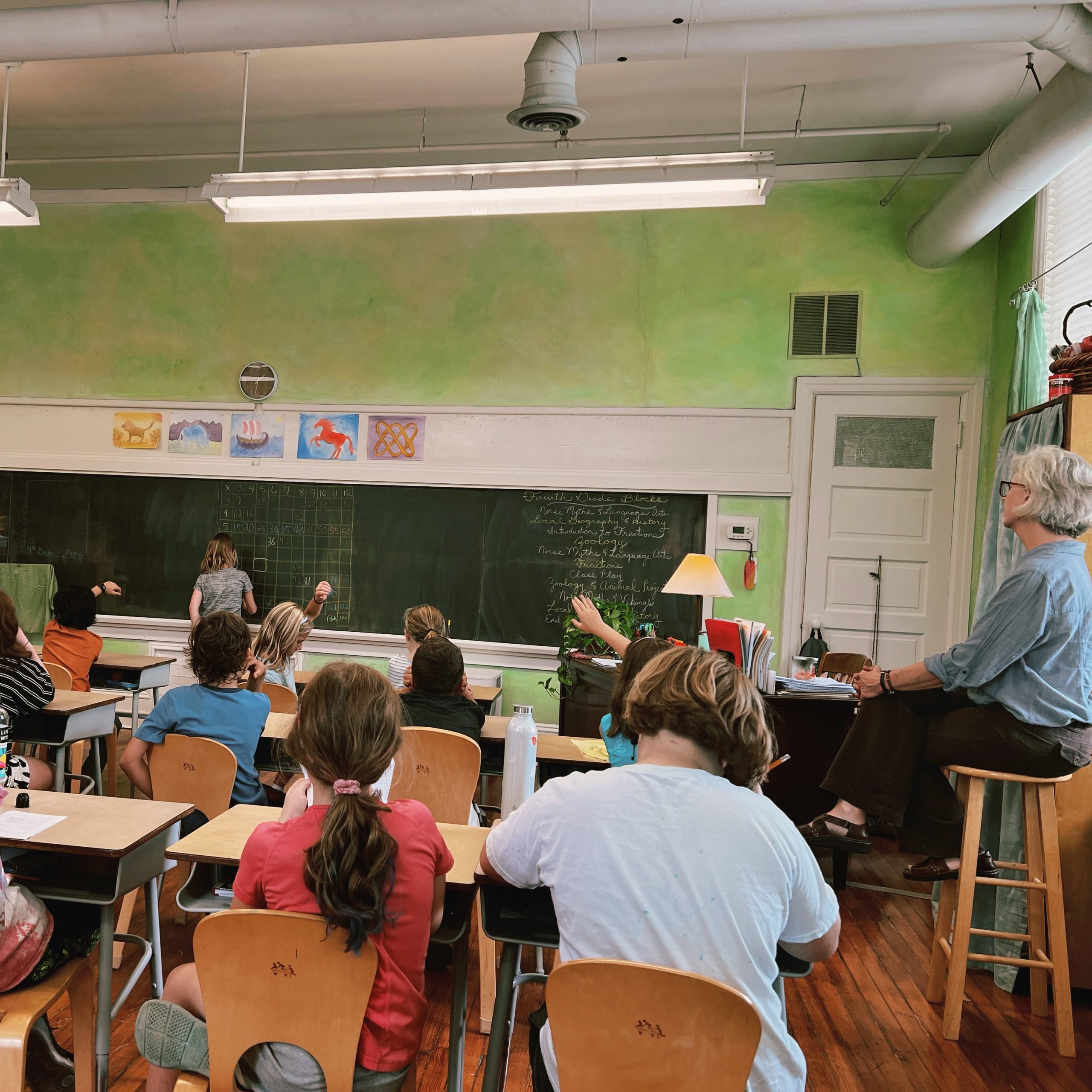

What’s your favorite part of being a teacher at SWS?
I can’t even begin. I think what I love, now that I’ve taken three classes through, is being able to see how each class has such a unique and amazing gift. I have learned from each of them. True gifts. And because each class is so different, I get to be creative all over again. I taught for seven years in public schools and, this was a long time ago, but it was pretty structured and I was only able to be creative in pockets. You know what you’re teaching with the structure and curriculum that’s given to us by Waldorf pedagogy, but, most importantly, you’re making sure that you’re meeting the kids in front of you. That form plus the freedom to make sure you’re meeting them is amazing.
What does it look like to meet your students where they are?
You know, there are times when I have something in mind and I look at them and can tell, “they need to move their math today, they don’t need to write their math.” Keeping it surprising for them. Especially in the winter, it’s really important to keep it fresh in other ways. There have also been numerous times when I’ve brought a lesson and I can sense how it interests them, so I changed the next couple of lessons to keep going in that direction. I make sure I meet all of their curiosities about a topic.
Another really important part of it is, as a class teacher, I have to keep growing with them. If I was the same 1st-grade teacher that met them this wouldn’t be working. I have to be aware, keep adjusting, and keep them guessing in some ways.
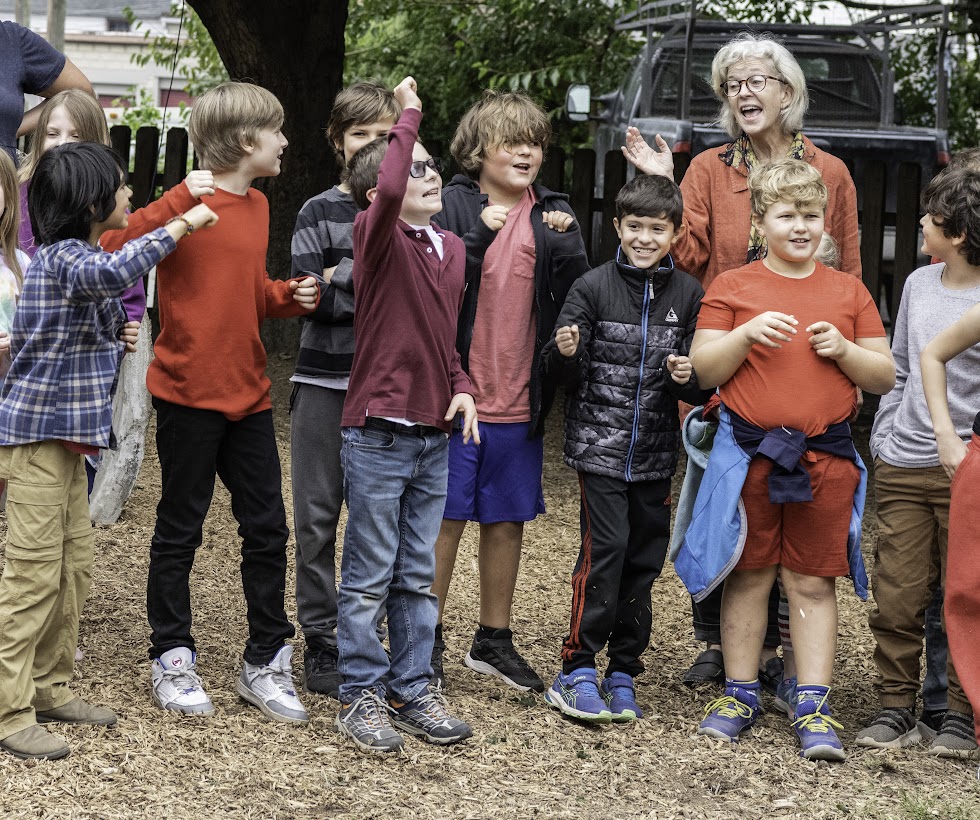

How has Waldorf education impacted you as a person?
I’m a work in progress. It’s a little bit of a catch-22 because when you’re a teacher and you’re before your students, you have to be so in the moment. And that is a blissful place to be, to be so in the moment, to be so attuned to what is around you. But it’s when you’re by yourself, you can get pulled into, “oh I gotta do this," or "I gotta do that.” I find that I have to work hard to be in the moment outside of the classroom. That is my striving: balancing. That is what Waldorf has brought to me. And I know, ultimately, that I become a better teacher when I’m truly trying to seek that. It is in the seeking.
As a parent, I'm so thankful. My oldest son went to college and had this realization that he was surrounded by people who were given messages early on that, “Oh, I’m not really a musician,” or “I’m not really artistic” and because of that, his peers, who were very talented, were pigeonholed and they would pigeon hole themselves. Because he came from a Waldorf background where everyone sews, everyone plays an instrument, everyone writes, and everyone’s in the play, he never got that message. He realized the gift for him was that because he experienced it all and everyone did everything, he never saw himself as not being able to try things. I’ve heard that echoed from all three of them. Because they were open to many things, they all landed in areas as adults that they’re really happy with and that they’re excited to go into further. As a parent, seeing that your children are happy in their adult lives with what they’re choosing, I mean, that’s it. Happy people. That’s all you want.
What's your favorite thing to do when you’re not teaching?
Good books are awesome. They’re an amazing escape. Spending time with my granddaughter. When the weather’s right, we love being outside. Biking and kayaking are biggies. Those are our favorite things: our granddaughter, biking, and kayaking when the weather’s good.
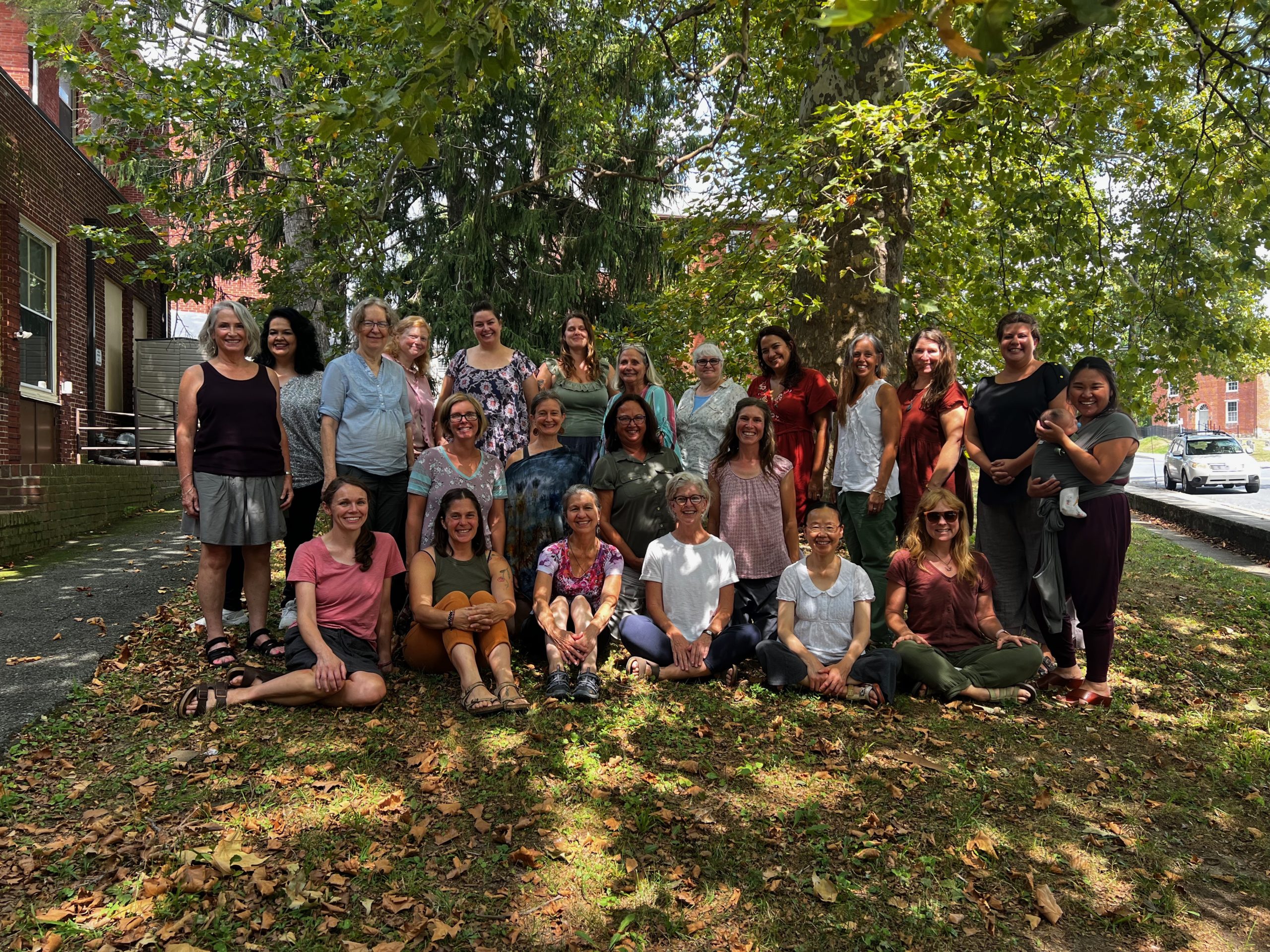

What’s your favorite thing about our school’s community?
So, again, I get so teary about this. With every class’s parent group, there have been gifts that I’ve received. With my colleagues, just knowing that we’re all striving. We have our good days and bad days and knowing that our paths don’t look the same in how we’re striving but having honor and grace in that. When we talk about our professional development, that’s high up on our list, “how are we working on ourselves?” People check their egos here.
Every day I’m just so thankful to come to a place where people are striving to do the best they can as humans working together. And also humans working around children. The parents do it every single day. Every time we come together to talk about their child or the class, everyone comes from their higher selves. That’s just awesome and that’s why the classes are as they are. That’s why the children are humming here because of the adults around them. That is just top-notch. We are here for these kids and the result is just this amazing environment that nurtures and holds these children and they feel it. Every day.
Celebrating the Chinese New Year at SWS
Written by SWS Mandarin teacher, Hui-Ling Singer.
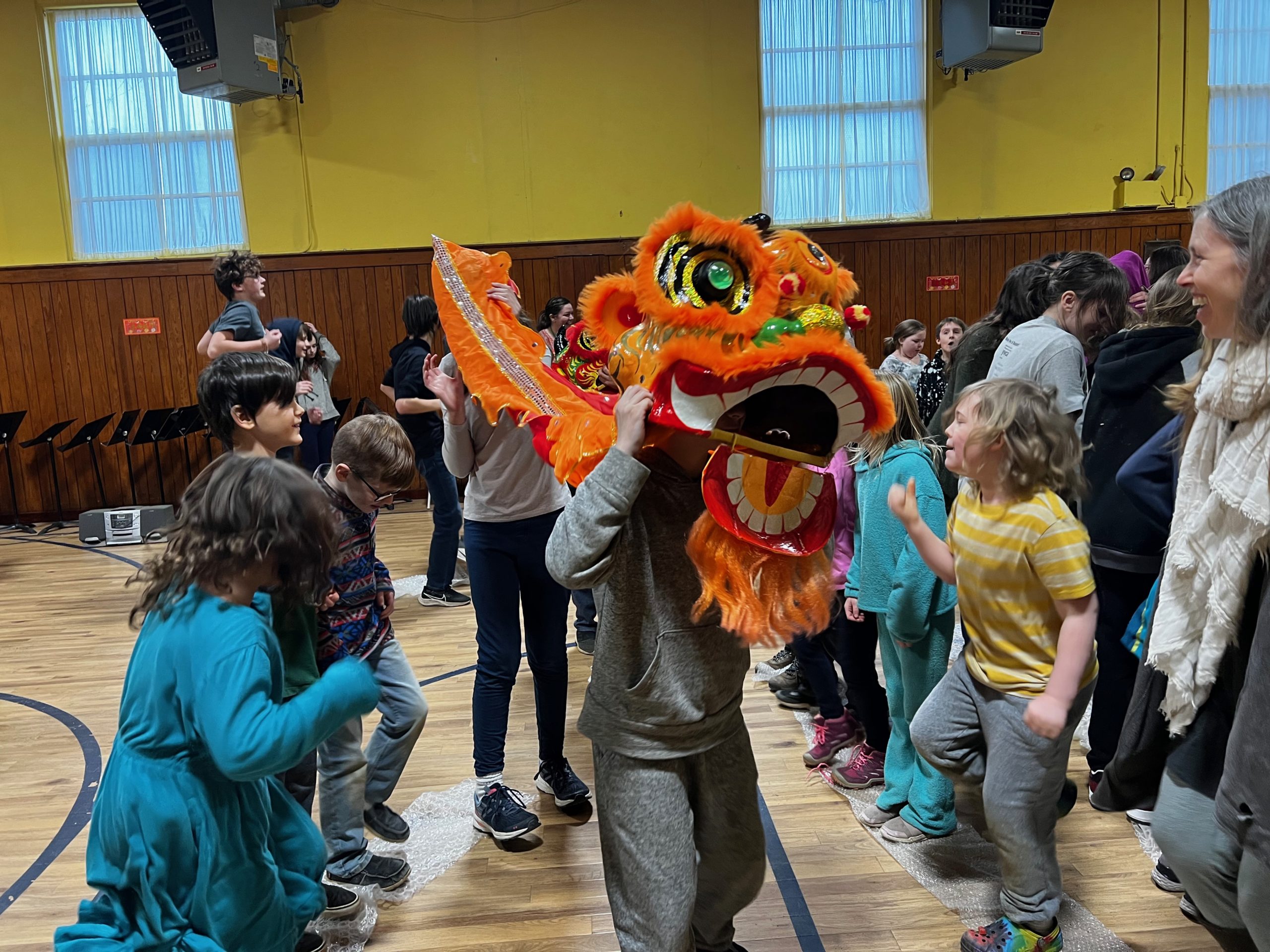

Chinese New Year is one of the most important Chinese Festivals. It celebrates the beginning of a new year based on the lunar calendar as opposed to the Gregorian calendar, which is the solar calendar used here in the USA. The first day of the Chinese New Year begins on the new moon which usually takes place between January 21st and February 20th on the Gregorian calendar each year. This year the Chinese New Year happened on January 22nd. Last year in 2022, it was on February 1st, and in 2024, it will be on February 10th. The Chinese New Year celebration lasts until the Lantern Festival which is January 15th on the lunar calendar and February 5th on the Gregorian calendar this year.
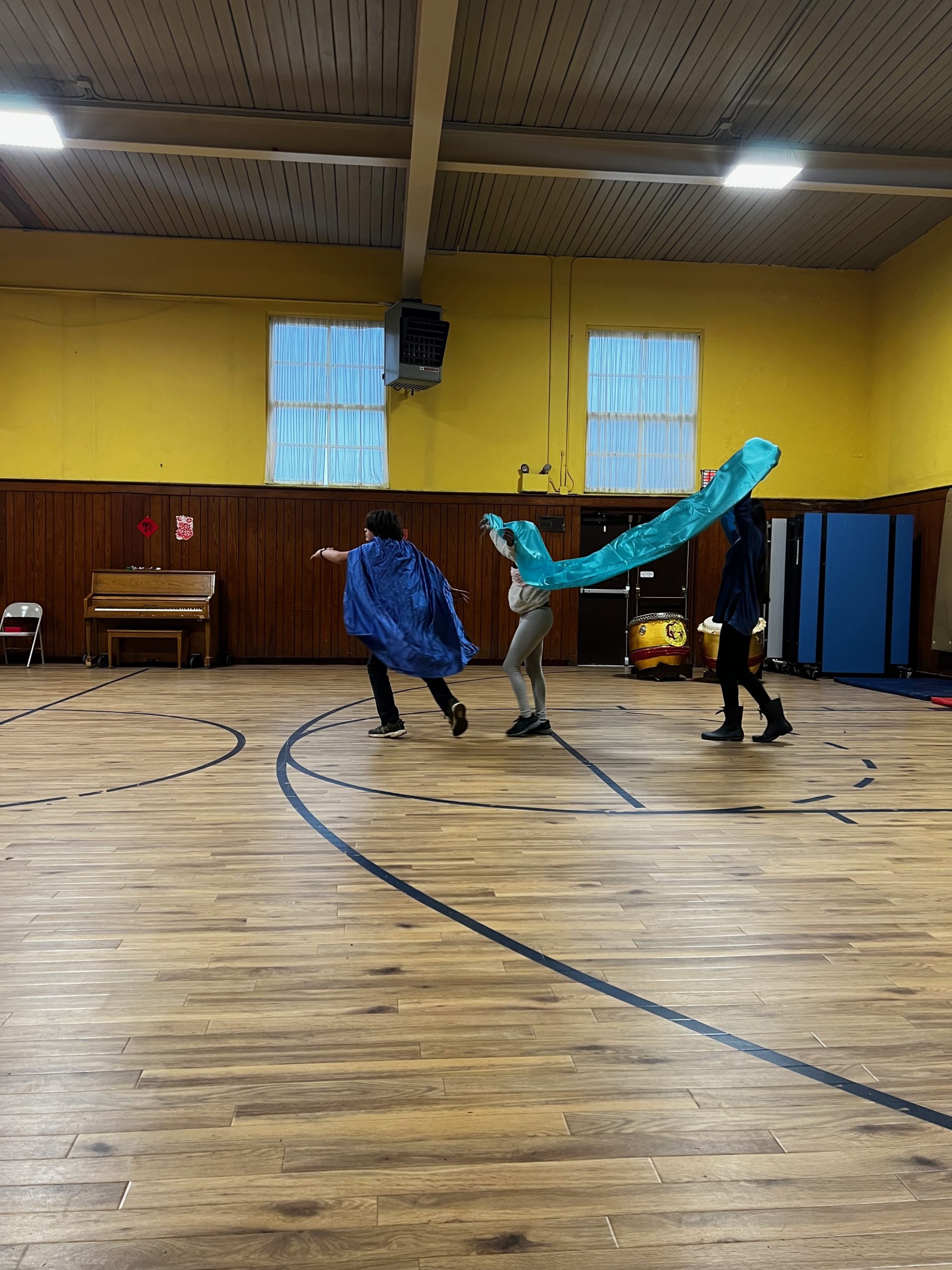

I feel very blessed to be part of the Susquehanna Waldorf School community that honors different cultures and all walks of life. Thanks to the support from our Leadership Council, DEI Committee, and the whole school, this year we were able to hold a very special assembly on Friday, January 20th to kick off the celebration for the New Year, the year of the Rabbit. Class 5 & 6 started the celebration by telling the legend behind the Chinese New Year, an Animal Called Nian (Year), followed by the very popular New Year Song from Class 7. A special moment was dedicated to Class 8 when the students received their Chinese names.
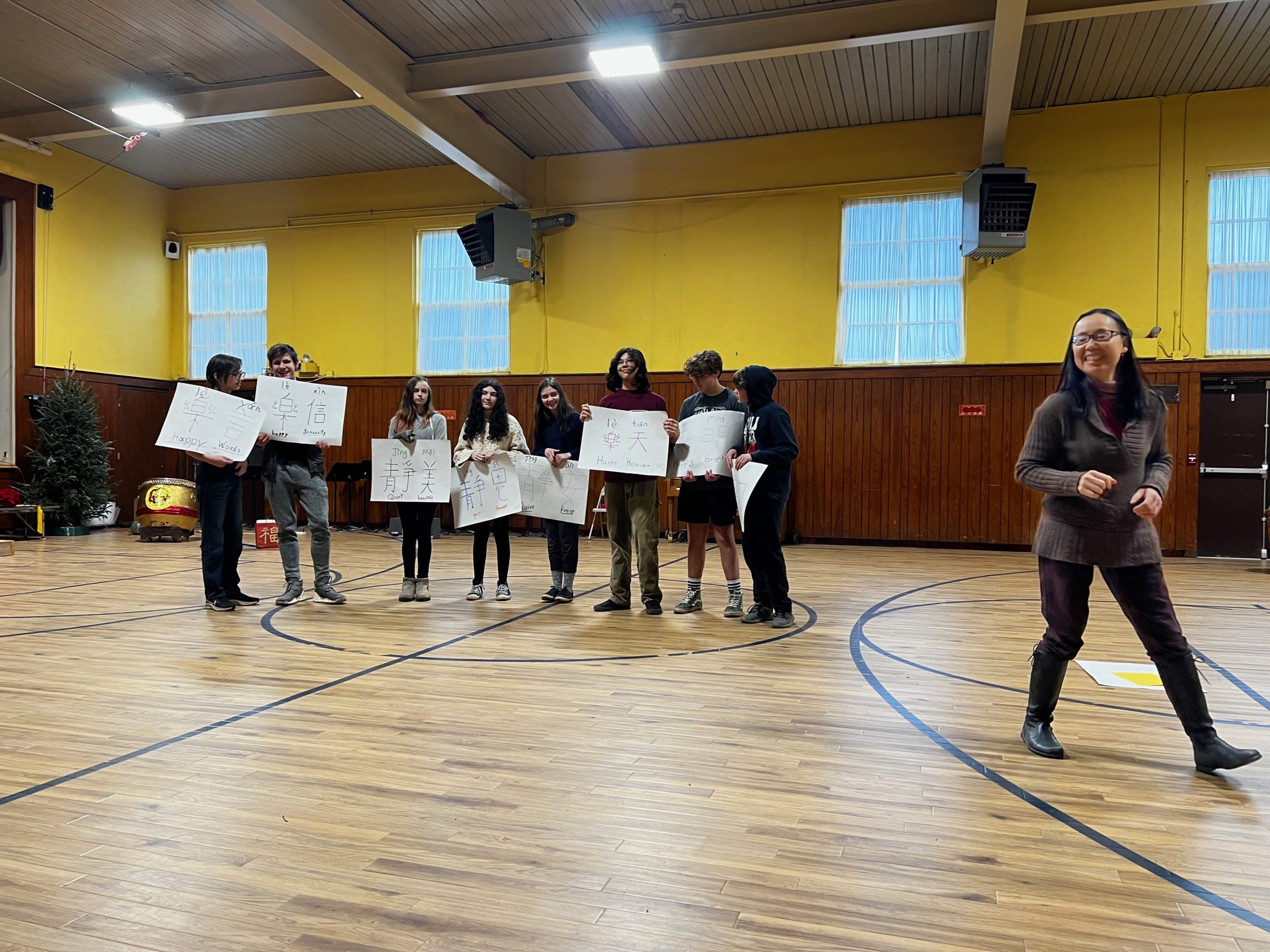

The highlights of the celebration were the Sword Dance and the Drumming performance by Kevin Chen, William Hinkson, and Rylee Hecht from CCAI (Chinese Cultural and Arts Institute in Harrisburg). The Sword Dance was the favorite for most of our students. The celebration concluded with the whole school jumping on the bubble wraps representing the sounds of the firecrackers, the Lion parade, more drumming from CCAI, and the students receiving the red envelopes with a dollar coin from Taiwan inside at the end. Special thanks to CCAI founder, Chen-Yu Tsuei!
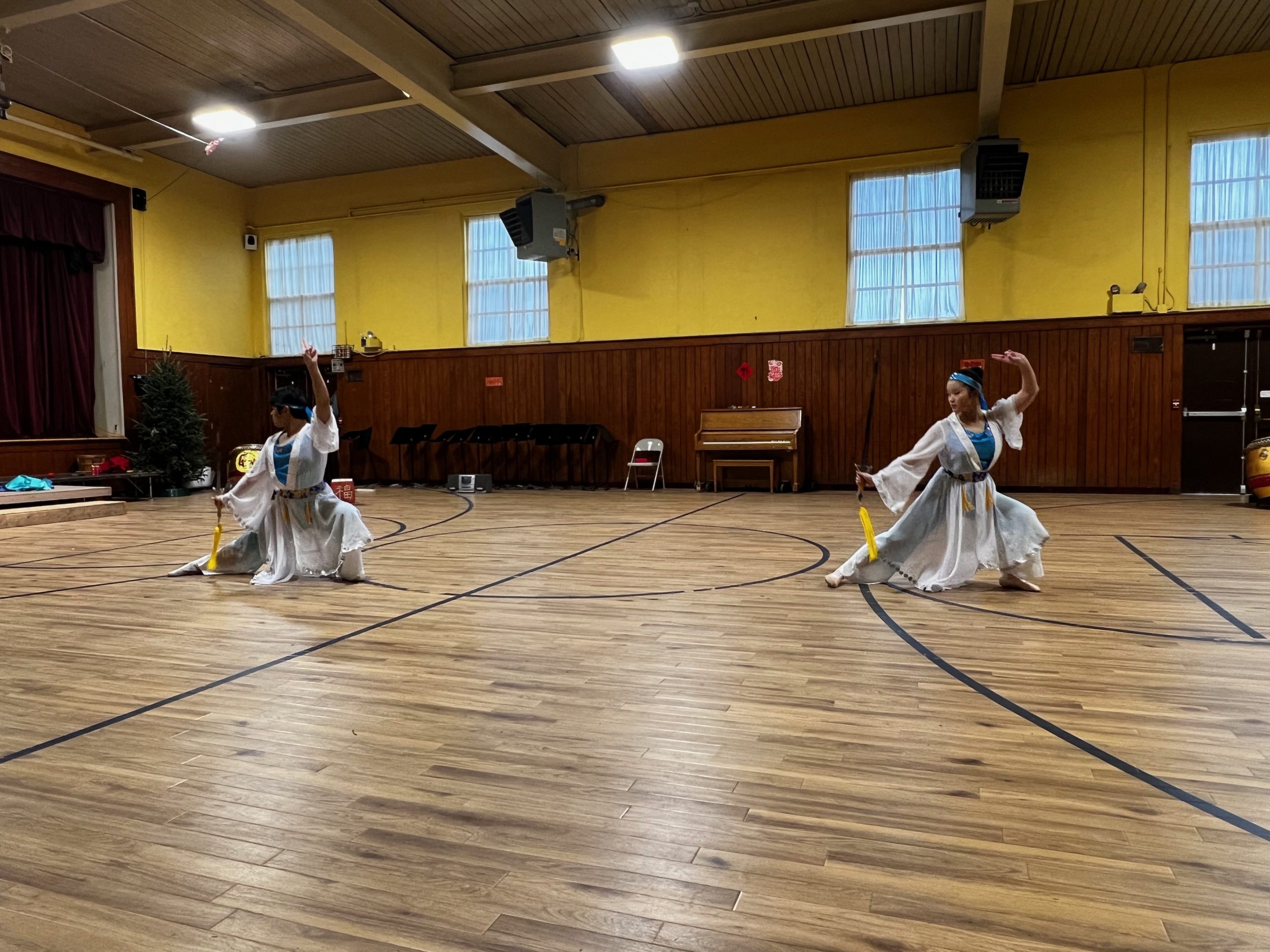

In addition to the Chinese New Year Celebration assembly, various cultural activities were also shared in each classroom. For example the story behind the 12 Chinese Zodiac Animals, paper cutting, lion head coloring, lantern making, and riddle guessing for the Lantern Festival, just to name a few. Some special Chinese New Year’s food was also shared, including Chinese New Year’s Sticky Rice Cake (see below for the recipe), dumplings, vegetable spring rolls, and mandarins. May the year of the Rabbit bring you and your family good health and lots of joyful blessings!
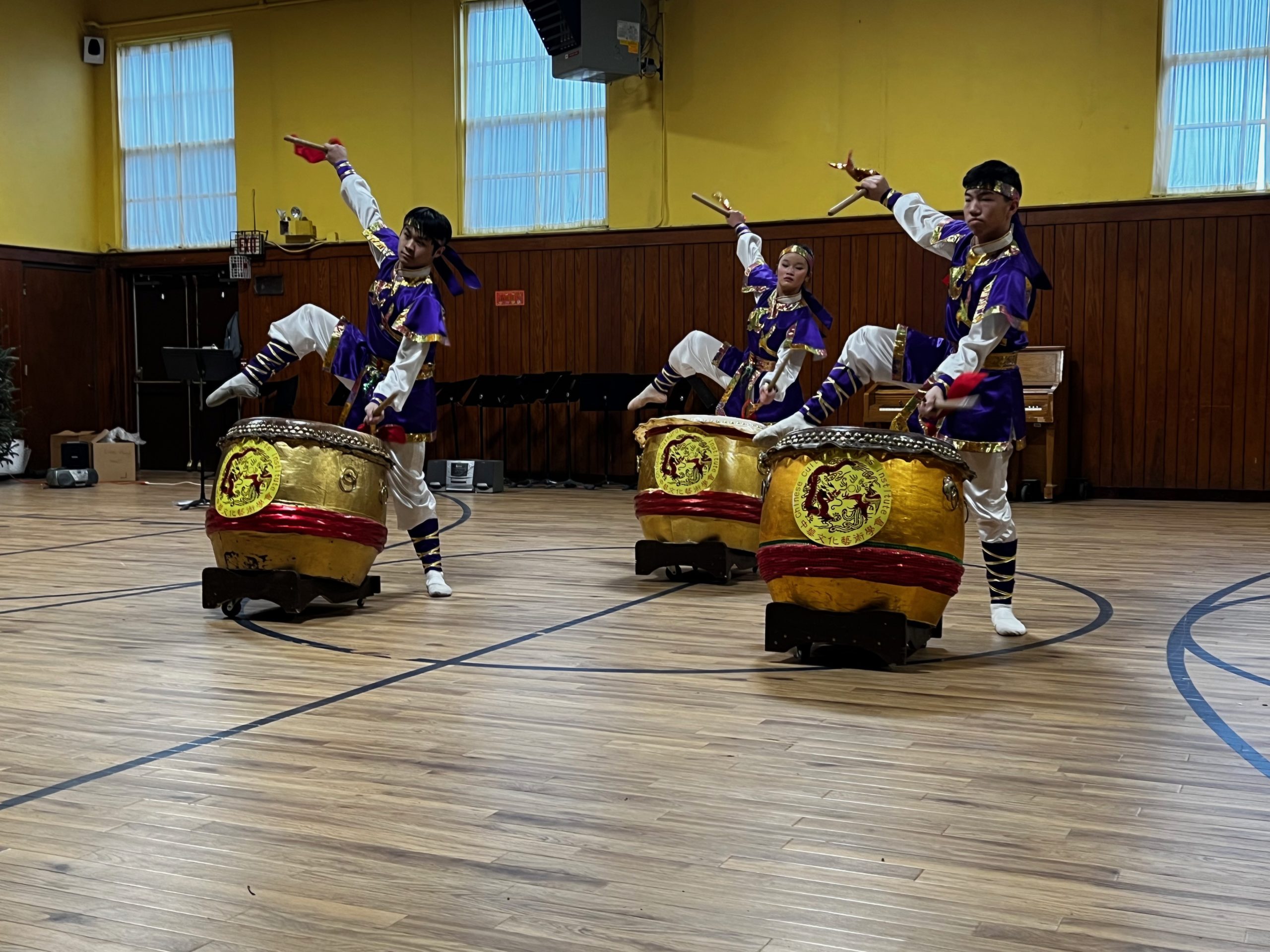

Chinese New Year Sticky Rice Cake Recipe
Chinese like to eat 年糕 (sticky rice cake) during the Chinese New Year. 年糕is pronounced “Nian Gao”. 年(nián) means “year” and 糕(gāo) means “cake”. 黏means sticky also is pronounced “nián”. 高 means high, tall or above the average is also pronounced “gāo”. Therefore, 年nián 糕gāo (sticky rice cake) is to symbolize this year will be better than last year.
Enjoy making this simple Chinese New Year sticky rice cake recipe and enjoy the 年nián 糕gāo! May the rest of your 2023 and the year of the Rabbit bring you and your family good health, lots of joyful blessings and loving memories!!!
1 lb glutinous rice flour (can be found in any local Asian markets)
3 eggs
¼ lb butter (room temperature)
2 cups sugar (I usually use a lot less, but you can follow the recipe the first time and adjust it later.)
1 tsp baking powder
1 tsp vanilla extract
3 cups milk (any kind of milk will do)
½ cup shredded coconut (can be eliminated if you don’t like coconut)
Mix the butter and sugar. Add the eggs and milk and mix well. Add the rice flour, baking powder, and vanilla extract and mix well. Add the shredded coconut and mix well.
Pour the mix into a greased 9”x13” pan. Bake at 350 degrees for about 50 to 60 minutes or until the surface turns golden brown. (Your kitchen is going to smell so good.)

